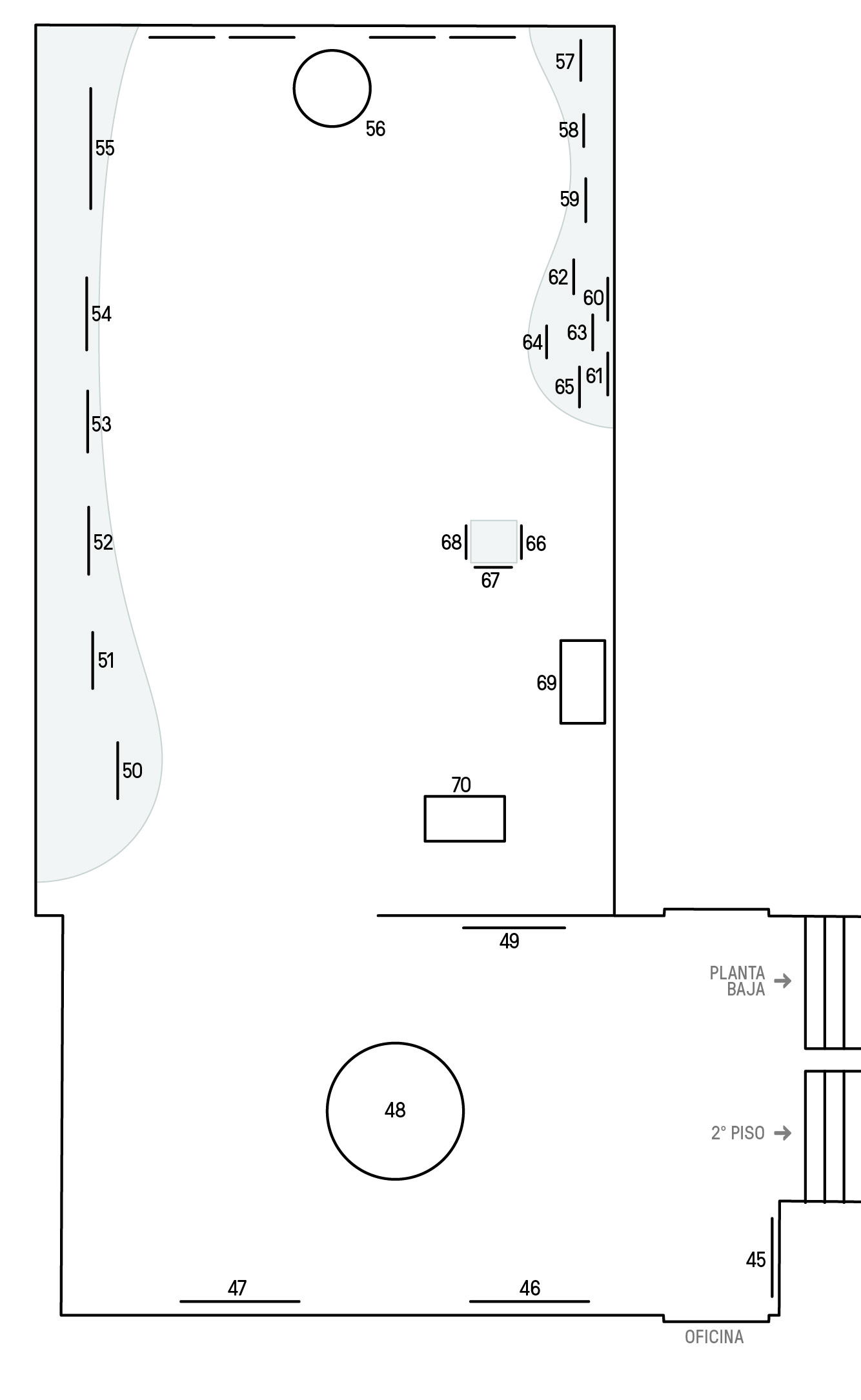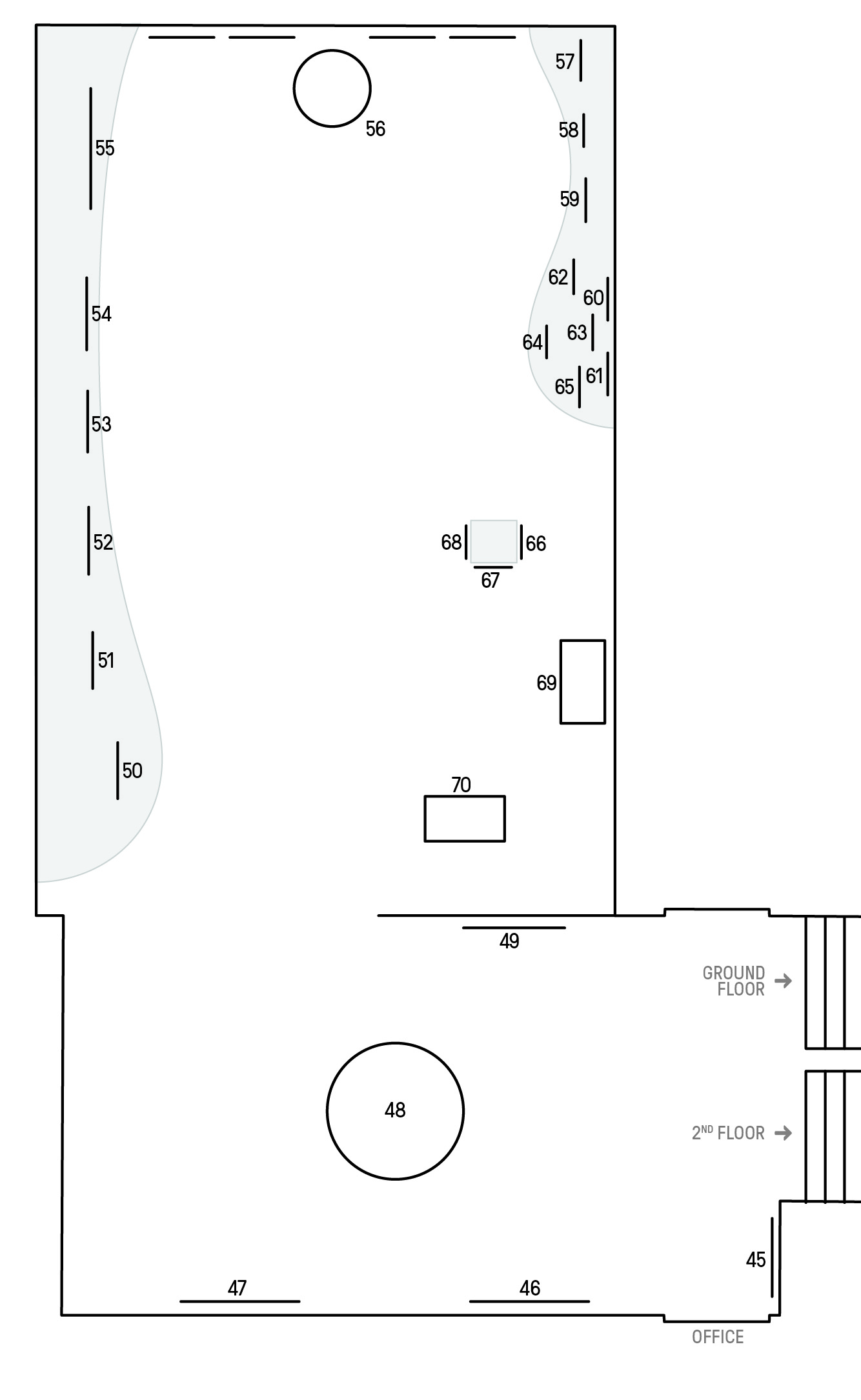Pensar lo escultórico, habitar lo público: Ángela Gurría y Helen Escobedo
Por Vera Castillo
En la década de 1960 los límites de la Ciudad de México fueron trazados a partir de las arterias viales, que se construían de manera continua conforme a las necesidades de traslado de una población en constante desarrollo. Esto ocurrió específicamente con el Anillo Periférico, cuya cimentación implicó, en un inicio, una demarcación territorial, aunque posteriormente contribuyó a la expansión de la ciudad misma. En ese momento, los arquitectos y artistas que formaban parte del ecosistema cultural favorecieron a la modificación visual y espacial de la mega urbe a partir de sus propuestas pictóricas, escultóricas y arquitectónicas. En ese contexto se inscribió la obra de las escultoras mexicanas Ángela Gurría (1929-2023) y HelenEscobedo (1934-2010), cuyo trabajo se desarrolló en disciplinas como el dibujo, la pintura, la escultura de pequeño y mediano formato. Sin embargo, el trabajo de ambas fue más reconocido por su desenvolvimiento en la creación dela escultura monumental y pública en México. En su obra se puede identificar un interés constante por los efectos del crecimiento desmedido de la ciudad, como la sobrepoblación y el aumento del parque vehicular, la contaminación atmosférica, auditiva y visual.
A finales de la década de los sesenta, los escultores comenzaron a dar mayor relevancia a la espacialidad por encima del lenguaje visual,1 que tuvo mucha relevancia una década antes con la inclusión de los artistas plásticos en la creación de la Ciudad Universitaria al sur de la Ciudad de México. La producción de Ángela Gurría y Helen Escobedo tuvo lugar en el periodo posterior a la discusión sobre la abstracción geométrica en contraposición dela figuración y el realismo social2 sostenido por los artistas de la Escuela Mexicana de Pintura. Así, la abstracción, la materialidad y el espacio cobraron fuerza en la producción escultórica, dejando de lado la representación, la figuración y las temáticas de corte histórico. Gurría y Escobedo eran artistas que se adentraron a un mundo escultórico que se asumía masculino, principalmente por el uso de materiales pesados y rígidos, así como por la utilización de herramientas que requerían de cierta fuerza corporal.3 Ambas escultoras trascendieron ciertos límites al ser perseverantes en su práctica escultórica.
Su trabajo confluyó en 1968, año en el que se llevaron a cabo los Juegos de la XIX Olimpiada en México. Para este evento, el pintor y escultor Mathias Goeritz propuso al arquitecto Pedro Ramírez Vázquez, presidente del Comité Organizador de esa edición de los Juegos Olímpicos, llevar a cabo una reunión internacional de escultores como parte de la Olimpiada Cultural, con el objetivo de crear un proyecto escultórico que incluyera esculturas monumentales de concreto.4 El equipo de la delegación mexicana estuvo conformado por Ángela Gurría, Helen Escobedo yJorge Dubón, quienes participaron en el proyecto que posteriormente fue nombrado “Ruta de la Amistad” y que concluyó con la elaboración de 18esculturas monumentales colocadas estratégicamente a lo largo del AnilloPeriférico. Para este proyecto, Escobedo realizó “Puertas al viento”, una escultura de 17 metros de altura, pintada con franjas verdes y azules que hacían alusión al cielo y a los campos de alfalfa que aún eran parte del paisaje citadino en la zona de Cuemanco.5 Por su parte, Gurría presentó “Señales” en la Glorieta de San Jerónimo, pero que, años más tarde, fue trasladada al cruce del Anillo Periférico Sur con Avenida Insurgentes.
Pensar lo escultórico, habitar lo público:Ángela Gurría y Helen Escobedo muestra la obra de estas artistas a partir de la década de1970, un periodo en que su trabajo despuntó tras su participación en la “Ruta de la Amistad”. Las piezas presentadas son muestra de su exploración en torno a lo material y espacial. En el caso de Gurría, se observan obras trabajadas con diversos materiales como la plata esterlina, el hierro forjado y hierro laminado, la cantera y el concreto, así como trabajos elaborados con lápiz, acuarela y pastel sobre papel. Para este periodo se comenzó a perfilar, por un lado, su interés por la materialidad al permitir que ésta tomara protagonismo sobre la forma, pero, por otro, se precisaron sus ideas en torno la función social de la escultura, su integración a la vida cotidiana y su relación con lo colectivo.
La muestra también incluye maquetas de obras que posteriormente se desarrollaron como proyectos monumentales. Tal es el caso de “Maqueta para ‘Río Papaloapan’”(1970), cuya escultura pública se encuentra actualmente a las afueras del Museo de Arte Moderno en la Ciudad de México, o “Maqueta para México monumento al mestizaje” (1973-1974), con su contraparte monumental ubicada hoy en Paseo delos Héroes, esquina con Boulevard Independencia, en Tijuana, Baja California.Lo mismo ocurre con la“Maqueta del Monumento a los trabajadores del drenaje profundo” (1974),elaborada con yeso y metal y cuya escultura monumental formó parte del Museo del Drenaje –hoy inexistente– en la Ciudad de México.
El trabajo de Gurría se ha identificado superficialmente por su interés por la representación del mundo natural y por la conexión que tenía con los materiales, el marcaje del ritmo y el sonido a la hora de trabajar con la piedra y la cantera. Hay en su obra una relación entre el cuerpo y la materia, pero sobre todo un vínculo con la naturaleza. El historiador del arte Daniel Garza Usabiaga enfatizó que Gurría trascendió el debate de la abstracción a través de sus intereses de corte humanista, de modo que sus piezas pueden entenderse a partir de un lenguaje simbólico de la naturaleza.6 Eso sucede con las piezas “Mariposa”(ca. 1970), “Celosía de mariposas”(1966), con las maquetas de los ríos Papaloapan (1970) y Grijalva (1974), “Arcoíris” (1978) y con las maquetas para la Mariposa Monarca, en las que se une la simbología con la geometría para representar animales y elementos de lo natural. Su mirada iba más allá de una conciencia ecológica, pues había en su obra una inclinación por retornar a la naturaleza. También trabajó en torno a la dualidad entre la viday la muerte y otros motivos inspirados en el imaginario de diversas culturas prehispánicas, en especial en diálogo con la cosmovisión mexica. En 1984, la escultora realizó su obra “Corazón mágico de Cutzamala - Homenaje a Tláloc”, un monumento dedicado al Sistema Cutzamala, el sistema hídrico que abastece a la Ciudad de México. Para este proyecto, la artista decidió homenajear al agua realizando una construcción piramidal adornada con anteojeras,7 un rasgo distintivo que porta Tláloc, la deidad mexica de la lluvia, el trueno y el agua.
El trabajo de Helen Escobedo estuvo centrado en la relación entre el arte y la ciudad, entre lo escultórico y lo visual, haciendo uso de materiales naturales e industriales como el aluminio laqueado y la madera, para la creación de las maquetas, así como el trabajo en relación con otras disciplinas como el dibujo elaborado con lápices, tinta y pasteles sobre papel. Con el uso de estos materiales, Escobedo realizó bocetos en los que ensayaba la composición y la selección de colores de distintos proyectos escultóricos. Algunas de sus maquetas como “TrilogíaAmarilla”, “Señal Amarilla (Díptico)” (1977), “Elegía negra” (1979-2009) y “Torres desfasadas”(1979-1980), fueron proyectos de escultura que la artista concibió para distintos espacios públicos, entre ellos el Anillo Periférico, pero que no se concretaron a escala monumental.
En su proceso creativo, Escobedo se servía de otras disciplinas como el dibujo y la fotografía. Su trabajo en el estudio, afirma la historiadora del arte Rita Eder, era multidisciplinario, pues utilizaba recursos como el fotomontaje, el collage y las maquetas para proyectar esculturas en el espacio público.8 De ahí que algunas de sus piezas estén conformadas por dípticos que incluyen un dibujo o collage y una maqueta elaborada en aluminio, metal o plexiglás. Estas piezas permiten reconocer parte del proceso creativo deEscobedo, tal como sucede con “Desarrollo de un módulo / Puerta triple” (1979-2009), “Centinelas de Aztlán / Escaleras de caracol (azules)” (1981), y “Propuestas urbanas: buscando escala / Escaleras de caracol (blancas)”, (ca. 1981). Varios de estos proyectos no llegaron a materializarse a escala monumental, sin embargo, otros como “Bardacaída / Barda caída doble” (1979) y “De la ficción ala realidad: Coatl / Coatl” (1980-1982), se realizaron en el espacio público.El primero trajo consigo la creación de “La cerca caída” inaugurada en 1982 en la Facultad de Estudios Superiores de Iztacala de la UNAM, como parte de los festejos por el 40 aniversario de existencia de la escuela. El segundo, se llevó a cabo en la obra monumental titulada “Coatl” que forma parte del “Espacio Escultórico” de Ciudad Universitaria, un proyecto colectivo trabajado por la misma Helen Escobedo con Manuel Felguérez, Mathias Goeritz, FedericoSilva, Hersúa y Sebastián, en una segunda fase de proyección escultórica para la Ciudad Universitaria (UNAM) en la Ciudad de México. Escobedo concibió “Coatl” como una escultura conformada por una sucesión de marcos cuadrados que acomodados uno detrás de otro creaban una escultura en movimiento, pintados con cinco colores representativos del fuego, que evoca a una serpiente típica dela zona del Pedregal.
Uno de los intereses principales para Escobedo fue el espacio, y eso es evidente tanto en sus obras como en sus declaraciones: “El espacio es el mediador absoluto de todo, es lo transparente y lo demarcante [sic]… es mental y es físico…tiene un destino que predomina lo visual más la dimensión corporal y del afectado, del observador, del visitante, habitante o del público en general”.9 Así, la escultora pensó en sus piezas como elementos integradores en el espacio, las concibió para la mirada del espectador dinámico, un concepto que tiempo antes había planteado David Alfaro Siqueiros en su práctica pictórica como muralista. Hay una intención de Escobedo por transformar la Ciudad de México, así como los entornos en otras zonas del país, integrando la escultura a la vida citadina, a la calle, a la naturaleza nacida entre concreto, así como por pensar en la urbe como un escenario en el que seven involucrados la arquitectura, el urbanismo y el arte.
Pensar lo escultórico, habitar lo público: Ángela Gurría y Helen Escobedo es una invitación para observar con atención las ideas, las preocupaciones y los procesos creativos de ambas escultoras. Al mismo tiempo, abre la puerta para retomar las reflexiones en torno a la escultura pública en México, su inserción en el espacio, la provocación que hace surgir en los habitantes, pero también para abrir un diálogo acerca de la noción de arte colectivo y arte público a finales del siglo XX.
1 - Rita Eder, “Transformaciones y transgresiones: Dos o tres ideas sobre la obra de Helen Escobedo” en Pasajes: Helen Escobedo, ed. Amalia Benavides, Irela Gonzaga, Magali Lara, (UNAM, 2011), 11.
2 - Daniel Garza Usabiaga, “Ángela Gurría. Segunda naturaleza”, en Ángela Gurría. Segunda Naturaleza, (Museo de Arte e Historia de Guanajuato, 2022),19.
3 - Sobre esto, Roselín Rodríguez Espinosa recupera un comentario de Rufino Tamayo en torno al trabajo de Ángela Gurría publicada en el periódico Excélsior en 1970, en relación a una exposición de la artista:“Estoy sorprendido, la exposición de Ángela Gurría me parece muy sorprendente.Hace unos días, apenas, la acabo de conocer, y me encantó la muchacha, esa fragilidad que tiene su persona, me parece que no corresponde a lo recio de su obra, pero lo cierto es que estoy sorprendido.” Roselín Rodríguez Espinosa, “A.de Ángela Gurría. La invención de un lugar para una mujer escultora de obras monumentales en el espacio público”, en Ángela Gurría. Señales, (INBAL,2024), 127.
4 - Rita Eder, “La escultura contemporánea enMéxico y la propuesta de Helen Escobedo”, en Helen Escobedo, (UNAM, 1982), 40.
5 - Helen Escobedo, “Aquí mismo, hace 31 años…”, enPasajes: Helen Escobedo, ed. Amalia Benavides, Irela Gonzaga, Magali Lara,(UNAM, 2011), 82.
6 - Daniel Garza Usabiaga, “Ángela Gurría. Segunda naturaleza”, 16.
7 - Eunice Adorno y Sandra Rozental, “Revisitar los monumentos hidráulicos de Ángela Gurría”, en Ángela Gurría. Señales,(INBAL, 2024), 204.
8 - Rita Eder, “Monumentos” en Pasajes: Helen Escobedo, ed. AmaliaBenavides, Irela Gonzaga, Magali Lara, (UNAM, 2011), 127.
9 - Helen Escobedo, “El espacio es el mediador absoluto de todo” en Pasajes: Helen Escobedo, ed. AmaliaBenavides, Irela Gonzaga, Magali Lara, (UNAM, 2011), 41.
Conceiving the Sculptural, Inhabiting the Public: Ángela Gurría and Helen Escobedo
By Vera Castillo
In the 1960s, the edges of Mexico City were mapped out on the basis of the main thoroughfares, which were continuously built to keep up with the transportation needs of an ever-developing population. This happened specifically with the Anillo Periférico (Ring Road), the laying of which initially involved marking out a territory, even as it subsequently contributed to the expansion of the city itself. At the time, the architects and artists who were part of the cultural ecosystem championed the visual and spatial modification of the megalopolis based on their pictorial, sculptural, and architectural projects. That was the context in which the output of the Mexican sculptors Ángela Gurría (1929–2023) and Helen Escobedo (1934–2010) was inscribed, as they developed their work in such disciplines as drawing, painting, and small- and medium-format sculpture. Nevertheless, the work of these two artists was renowned more for the way it unfolded in the creation of monumental and public sculpture in Mexico. One can identify in their work an abiding interest in the effects of the city’s exorbitant growth, like overpopulation and the increase in motor vehicles as well as air, noise, and visual pollution.
In the late 1960s, sculptors started emphasizing spatiality over visual language,1 which was very relevant a decade earlier with the inclusion of visual artists in the creation of University City in southern Mexico City. Ángela Gurría’s and Helen Escobedo’s production took place in the wake of the debate about geometrical abstraction in opposition to the figuration and social realism2 upheld by the artists of the Mexican School of Painting. In this way, abstraction, materiality, and space gained steam in sculptural production, pushing aside representation, figuration, and themes with a historical bent. As artists, Gurría and Escobedo penetrated a sculptural world that was regarded as masculine, due primarily to the use of heavy, inflexible materials, along with the use of tools that required a certain degree of physical strength.3 Both sculptors overcame certain boundaries by persevering in their sculptural practice.
Their work converged in 1968, the year when the 19th Olympic Games were held in Mexico City. For this event, the painter and sculptor Mathias Goeritz proposed to the architect Pedro Ramírez Vázquez, president of the Organizing Committee for that edition of the Olympic Games, to carry out an international meeting of sculptors as part of a Cultural Olympics, with the objective of creating a sculpture project that would include monumental concrete sculptures.4 The team from the Mexican delegation consisted of Ángela Gurría, Helen Escobedo, and Jorge Dubón, who participated in the project, subsequently named the “Ruta de la Amistad” (Route of Friendship), and which was consummated with the building of 18 monumental sculptures located strategically around the circumference of the Anillo Periférico. For this project, Escobedo made Puertas al Viento (Doors to the Wind), a 17-meter-tall sculpture painted in green and blue stripes that alluded to the sky and the fields of alfalfa that were still part of cityscape in the area around Cuemanco.5 For her part, Gurría presented Señales (Signals) in the San Jerónimo roundabout; years later, it was moved to the intersection of the Anillo Periférico and Avenida Insurgentes.
Conceiving the Sculptural, Inhabiting the Public: Ángela Gurría and Helen Escobedo shows work these artists made starting in the 1970s, a period when their work flourished following their participation in the “Ruta de la Amistad.” The pieces presented are a sample of their explorations of materiality and spatiality. In Gurría’s case, we see works made with a variety of materials, including sterling silver, forged iron, sheet iron, quarry stone, and concrete, as well as works done with pencil, watercolor, and pastel on paper. Around this time, we see the beginning of an outline of her interest in materiality by allowing this to play the leading role over form, as well as the formation of more specific ideas about the social function of sculpture, its integration into everyday life, and its relationship to the collective.
The show also includes models of works that were later developed into monumental projects. Such is the case of Model for Río Papaloapan (1970), the public sculpture currently found outside the Museo de Arte Moderno in Mexico City, and Model for México Monumento al mestizaje (1973–1974), with its monumental counterpart now located on the Paseo de los Héroes, at the corner of Boulevard Independencia, in Tijuana, Baja California. The same goes for Model for the Monumento a los trabajadores del drenaje profundo (1974), made with plaster and metal, the monumental version of which was part of Mexico City’s now defunct Museo del Drenaje.
Gurría’s work has superficially been identified by her interest in representing the natural world and by her connection with materials, marking rhythm and sound while working with stone and rock. In her work there is a relationship between the body and matter, but above all a link with nature.6 Art historian Daniel Garza Usabiaga stresses that Gurría went beyond the debate around abstraction through her humanistic interests, such that her pieces can be understood through a symbolic language of nature. We see this in the pieces Mariposa (Butterfly, ca. 1970), Celosía de mariposas (Butterfly Lattice, 1966), in her models of the Papaloapan (1970) and Grijalva (1974) Rivers, Arco iris (Rainbow, 1978), and in the models for the Monarch Butterfly, which combine symbolism with geometry to represent animals and natural features. Her vision extended beyond an ecological consciousness, for in her work there was an inclination to return to nature. She also worked on the duality of life and death and other motifs inspired by the imaginary of different pre-Hispanic cultures, especially in dialogue with the Mexica worldview. In 1984, the sculptor made her work Corazón mágico de Cutzamala—Homenaje a Tláloc (Magic Heart of Cutzamala—Homage to Tlaloc), a monument dedicated to the Sistema Cutzamala, the waterworks that supplies Mexico City. With this project, the artist decided to pay homage to water by making a pyramidal construction fitted with blinders,7 a distinctive accoutrement worn by Tlaloc, the Mexica god of rain, thunder, and water.
Helen Escobedo’s work focused on the relationship between art and the city, between the sculptural and the visual, making use of natural and industrial materials like lacquered aluminum and wood to make models, as well as work related to other disciplines like drawing in pencil, ink, and pastel on paper. Escobedo used these materials to make sketches in which she tried out her compositions and color selections for different sculptural projects. Some of her models, like Trilogía Amarilla (Yellow Trilogy), Señal Amarilla (Díptico) (Yellow Signal [Diptych], 1977), Elegía negra (Black Elegy, 1979–2009) and Torres desfasadas (Towers out of Phase, 1979–1980), were of sculpture projects that the artist conceived for different public spaces, including the Anillo Periférico, but were never realized on a monumental scale.
Escobedo’s creative process drew from other disciplines like drawing and photography. As art historian Rita Eder has noted, her studio work was multidisciplinary, since she used resources like photo-montage, collage, and models to design proposed sculptures for public space;8 some of her pieces thus consist of diptychs that include a drawing or collage and a model made out of aluminum, metal, or plexiglass. These pieces make it possible to recognize part of Escobedo’s creative process, as in the cases of Desarrollo de un modulo / Puerta triple (Development of a Module / Triple Door, 1979–2009), Centinelas de Aztlán / Escaleras de caracol (azules) (Sentinels of Aztlán / [Blue] Snail Shell Stairs, 1981), and Propuestas urbanas: buscando escala / Escaleras de caracol (blancas) (Urban Proposals: Looking for Scale / [White] Snail Shell Stairs, ca. 1981). Several of these projects were never materialized on a monumental scale, but others, like Barda caída / Barda caída doble (Fallen Fence / Double Fallen Fence, 1979) and De la ficción a la realidad: Coatl / Coatl (From Fiction to Reality: Coatl / Coatl, 1980–1982), were made in public space. The first of these led to the creation of La cerca caída (The Fallen Fence), completed in 1982 at the UNAM’s Facultad de Estudios Superiores de Iztacala during the celebration of the school’s 40th anniversary. The second became the monumental work titled Coatl, part of University City’s Sculpture Space, a collective project whose collaborators included Helen Escobedo herself, along with Manuel Felguérez, Mathias Goeritz, Federico Silva, and Hersúa y Sebastián, in a second phase of producing sculpture projects for the UNAM’s University City in Mexico City. Escobedo conceived Coatl as a sculpture comprising a succession of square frames that, arranged one after another, created a moving sculpture, painted with five colors representative of fire, that evokes a snake commonly found in the area of El Pedregal.
One of Escobedo’s primary interests was space, and that is obvious both in her works and her statements: “Space is the absolute mediator of everything, it’s what’s transparent and what’s defining [sic]… it’s mental and it’s physical… it has a destiny that predominates over the visual, plus the bodily and affective dimension of the observer, the visitor, inhabitant, or the public in general.”9 The sculptor thus thought of her pieces as integrative elements in space, conceiving them for the gaze of viewers in motion, a concept that David Alfaro Siqueiros had previously posited in his pictorial practice as a muralist. Escobedo intended to transform Mexico City, along with the environs of other parts of the country, integrating sculpture into the life of the city, into the street, into the nature that is born amongst the concrete, as well as conceiving the city as a stage on which architecture, urban design, and art can be seen to interpenetrate each other.
Conceiving the Sculptural, Inhabiting the Public: Ángela Gurría and Helen Escobedo is an invitation to attend closely to these two sculptors’ ideas, concerns, and creative processes. At the same time, it opens the door to reflecting anew on public sculpture in Mexico, its insertion in space, the provocation that it elicits in the people who live here, but also to starting a dialogue about the notion of collective art and public art in the late twentieth century.
1 - Rita Eder, “Transformaciones y transgresiones: Dos o tres ideas sobre la obra de Helen Escobedo,” in Pasajes: Helen Escobedo, ed. Amalia Benavides, Irela Gonzaga, Magali Lara (UNAM, 2011), 11.
2 - Daniel Garza Usabiaga, “Ángela Gurría: Segunda naturaleza,” in Ángela Gurría: Segunda naturaleza (Museo de Arte e Historia de Guanajuato, 2022), 19.
3 - On this, Roselín Rodríguez Espinosa recuperates a comment of Rufino Tamayo’s about Ángela Gurría’s work published in the newspaper Excélsior in 1970, relative to an exhibition by the artist: “I’m surprised; Ángela Gurría’s exhibition strikes me as very surprising. I met her just a few days ago, and found the young woman enchanting, that fragility she has, it seems to me like it doesn’t correspond to the robustness of her work, but what is certain is that I’m surprised.” Roselín Rodríguez Espinosa, “A. de Ángela Gurría: La invención de un lugar para una mujer escultora de obras monumentales en el espacio público,” in Ángela Gurría: Señales (INBAL, 2024), 127.
4 - Rita Eder, “La escultura contemporánea en México y la propuesta de Helen Escobedo,” in Helen Escobedo (UNAM, 1982), 40.
5 - Helen Escobedo, “Aquí mismo, hace 31 años…,” in Pasajes, 82.
6 - Daniel Garza Usabiaga, “Ángela Gurría: Segunda naturaleza,” 16.
7 - Eunice Adorno and Sandra Rozental, “Revisitar los monumentos hidráulicos de Ángela Gurría,” in Ángela Gurría: Señales, 204.
8 - Rita Eder, “Monumentos,” in Pasajes, 127.
9 - Helen Escobedo, “El espacio es el mediador absoluto de todo,” in Pasajes, 41.

28 piedras de cantera talladas a mano
(Dimensiones variables según la configuración) 30.5 x 30 x 10 cm
28 hand-carved quarry stones
(Variable dimensions according to the configuration) 12.01 x 11.81 x 3.94 in

Dibujo: Lápiz de color y marcador en papel Maqueta: Madera laqueada
Dibujo: 70 x 90 x 3.5 cm Maqueta: 40 x 120 x 90 cm
Drawing: Color pencil and marker on paper Model: Lacquered Wood
Drawing: 27.56 x 35.43 x 1.38 in Model: 15.75 x 47.24 x 35.43 in

Madera y aluminio laqueada
80.5 x 61.6 x 18.5 cm
Lacquered wood and aluminium
31.69 x 24.25 x 7.28 in

Dibujo: Tinta y grafito sobre papel Maqueta: Aluminio laqueada sobre base de madera
Dibujo: 72.5 x 92.5 x 4 cm Maqueta: 36 x 121.5 x 40 cm
Drawing: Ink and graphite on paper Model: Lacquered aluminum on wooden base
Drawing: 28.54 x 36.42 x 1.57 in Model: 14.17 x 47.83 x 15.75 in
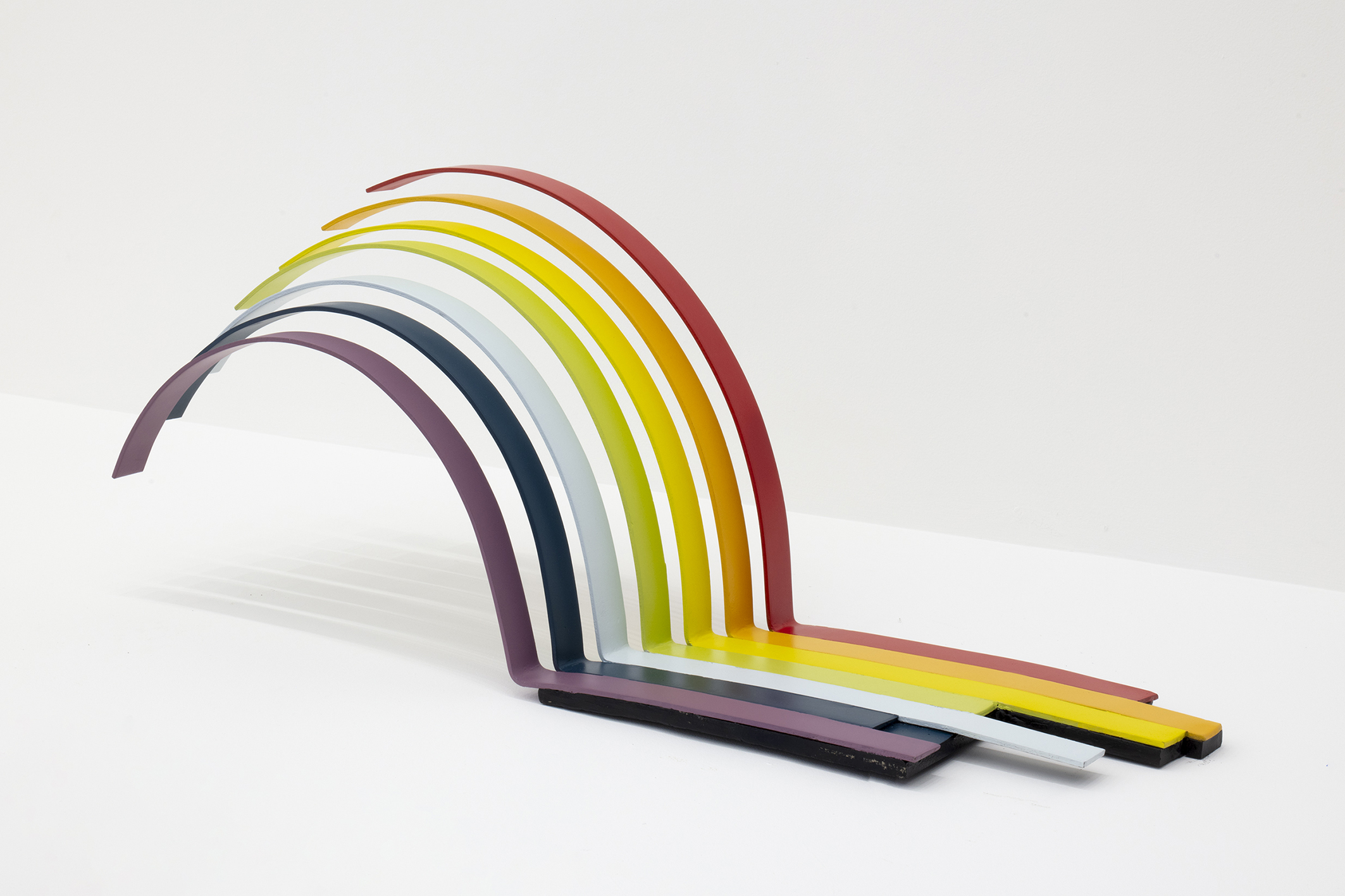
Hierro laminado y pintado
41 x 102 x 27 cm
Laminated and painted iron
16.14 x 40.16 x 10.63 in
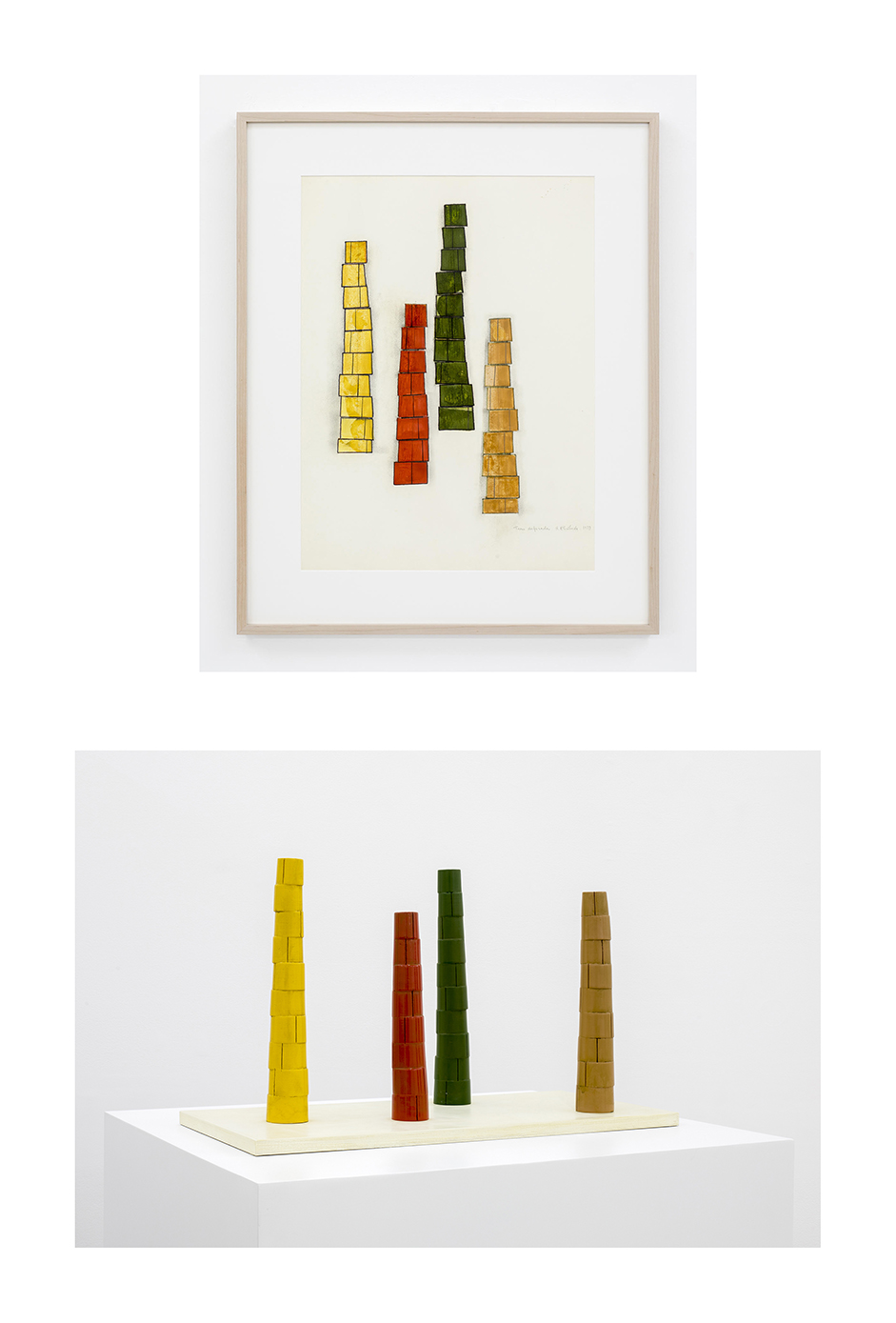
Dibujo: Acrílico, marcador y grafito sobre papel Modelo: Madera laqueada
Dimensiones del dibujo:81.5 x 65.5 x 3.5 cm Dimensiones de modelo:37 x 63 x 30 cm
Drawing: Acrylic and marker and graphite on paper Model: Lacquered wood
Framed drawing dimensions: 32.09 x 25.79 x 1.38 in Model dimensions: 14.57 x 24.8 x 11.81 in

Metal laqueada
34 x 43.2 x 63.4 cm
Lacquered metal
13.39 x 17.01 x 24.96 in

Aluminio laqueada
11 x 25 x 18.5 cm
Lacquered aluminium
4.33 x 9.84 x 7.28 in
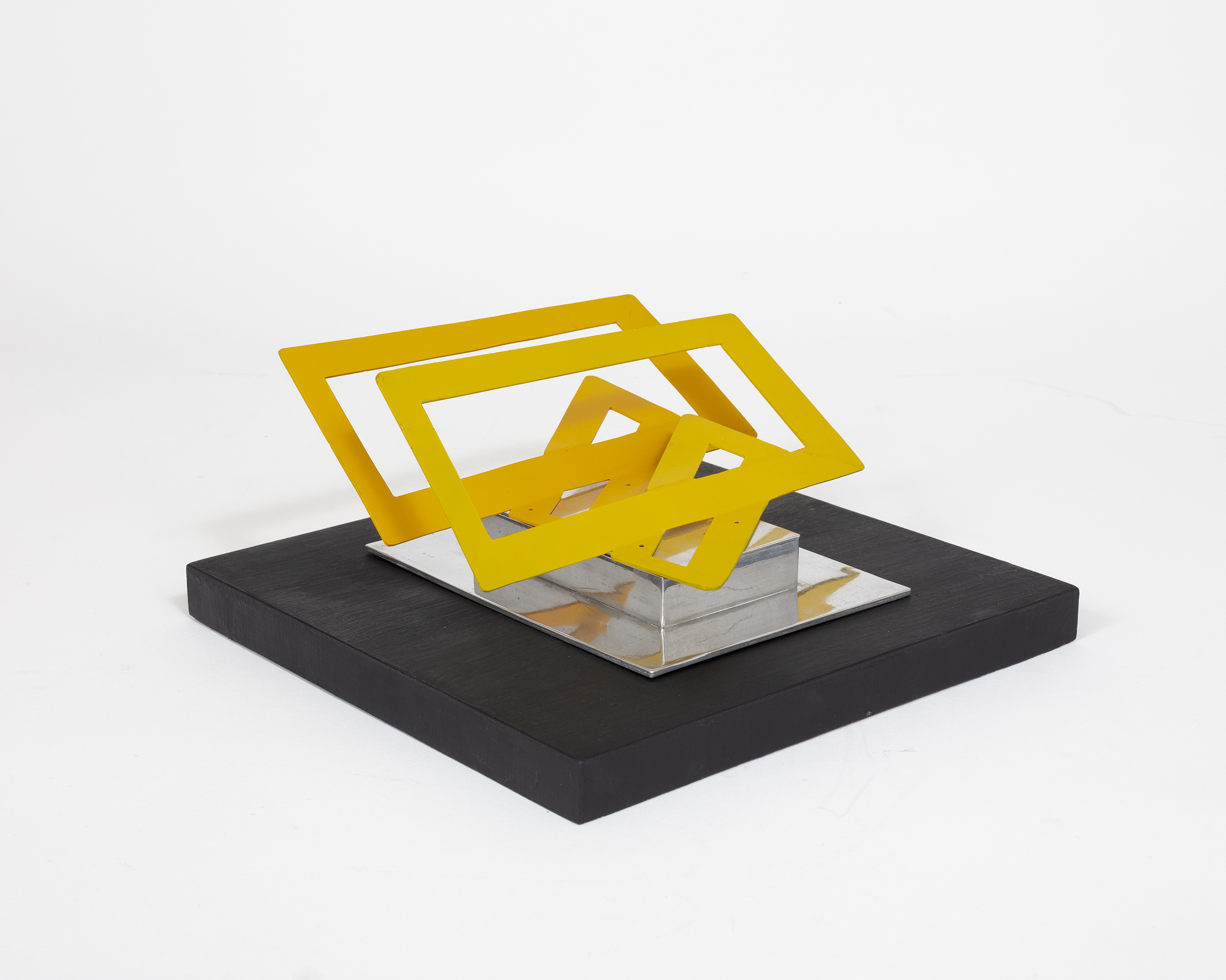
Aluminio Laqueado
11 x 25 x 25 cm
Lacquered aluminum
4.33 x 9.84 x 9.84 in

Aluminio
21.5 x 70.5 x 40.5 cm
Aluminium
8.46 x 27.76 x 15.94 in

4 columnas de madera laqueada, 11 escaleras de aluminio pintadas y una base de aluminio
102 x 100 x 70.5 cm
4 columns of Lacquered wood, 11 aluminum painted ladders and aluminium base
40.16 x 39.37 x 27.76 in
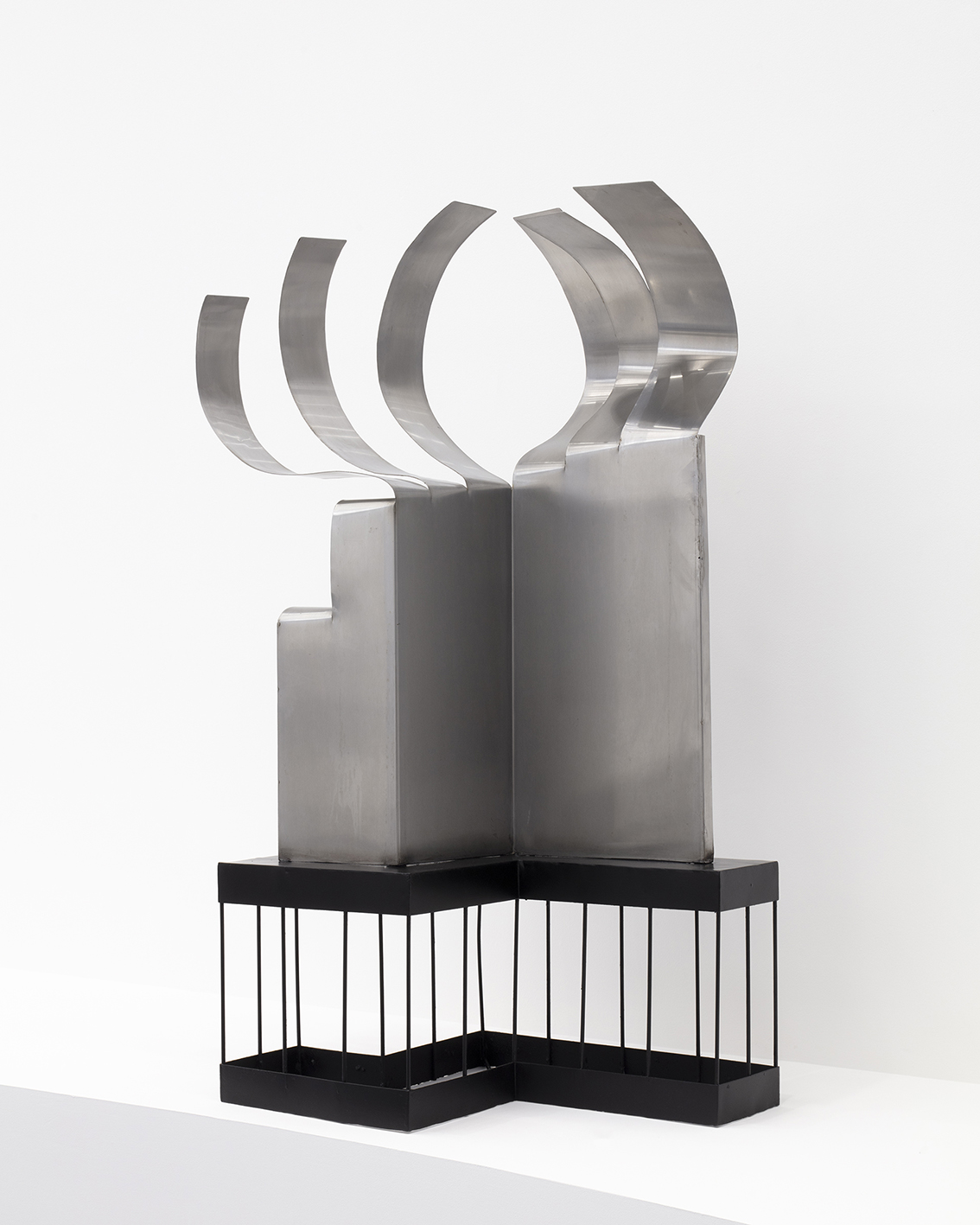
Acero inoxidable y hierro laminado y pintado
152 x 92 x 79 cm
Stainless steel and laminated and painted iron
59.84 x 36.23 x 31.1 in

Aluminio
25.5 x 45.5 x 32 cm
Aluminum
10.04 x 17.91 x 12.6 in

Aluminio y madera
81.5 x 100 x 70.5 cm
Aluminum and wood
32.09 x 39.37 x 27.76 in

Aluminio laqueada
18.5 x 38.5 x 24.5 cm
Lacquered aluminium
7.28 x 15.16 x 9.65 in

Dibujo: Grafito y marcador sobre papel vitela Maqueta: Metal laqueada
Dibujo: 79 x 63 x 3.5 cm Maqueta: 52.5 x 50 x 31 cm
Drawing: Graphite and marker on vellum paper Model: Lacquered metal
Drawing: 31.1 x 24.8 x 1.38 in Model: 20.67 x 19.69 x 12.2 in
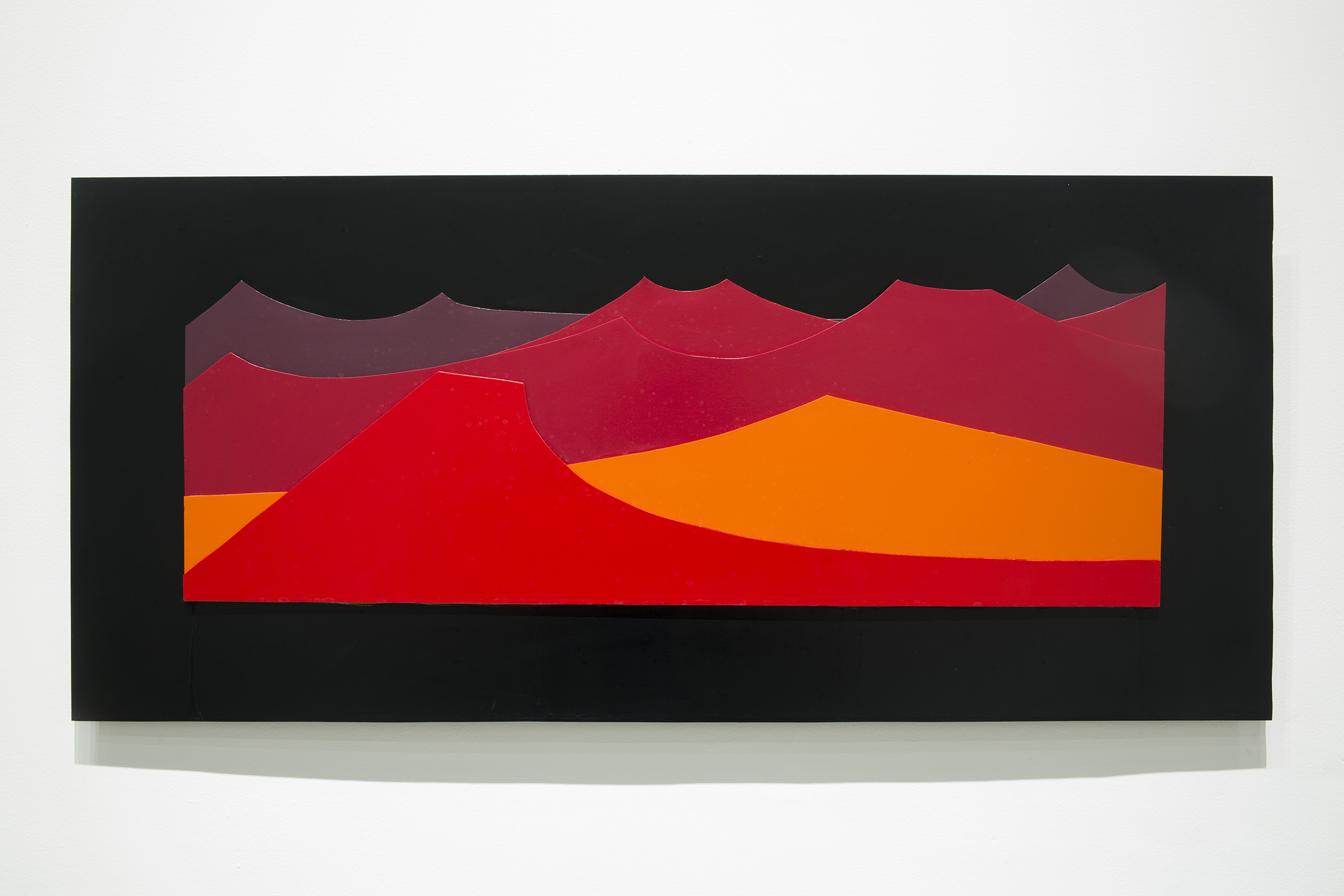
Hierro laminado y pintado
47 x 104 x 3 cm
Laminated and painted iron
18.5 x 40.94 x 1.18 in
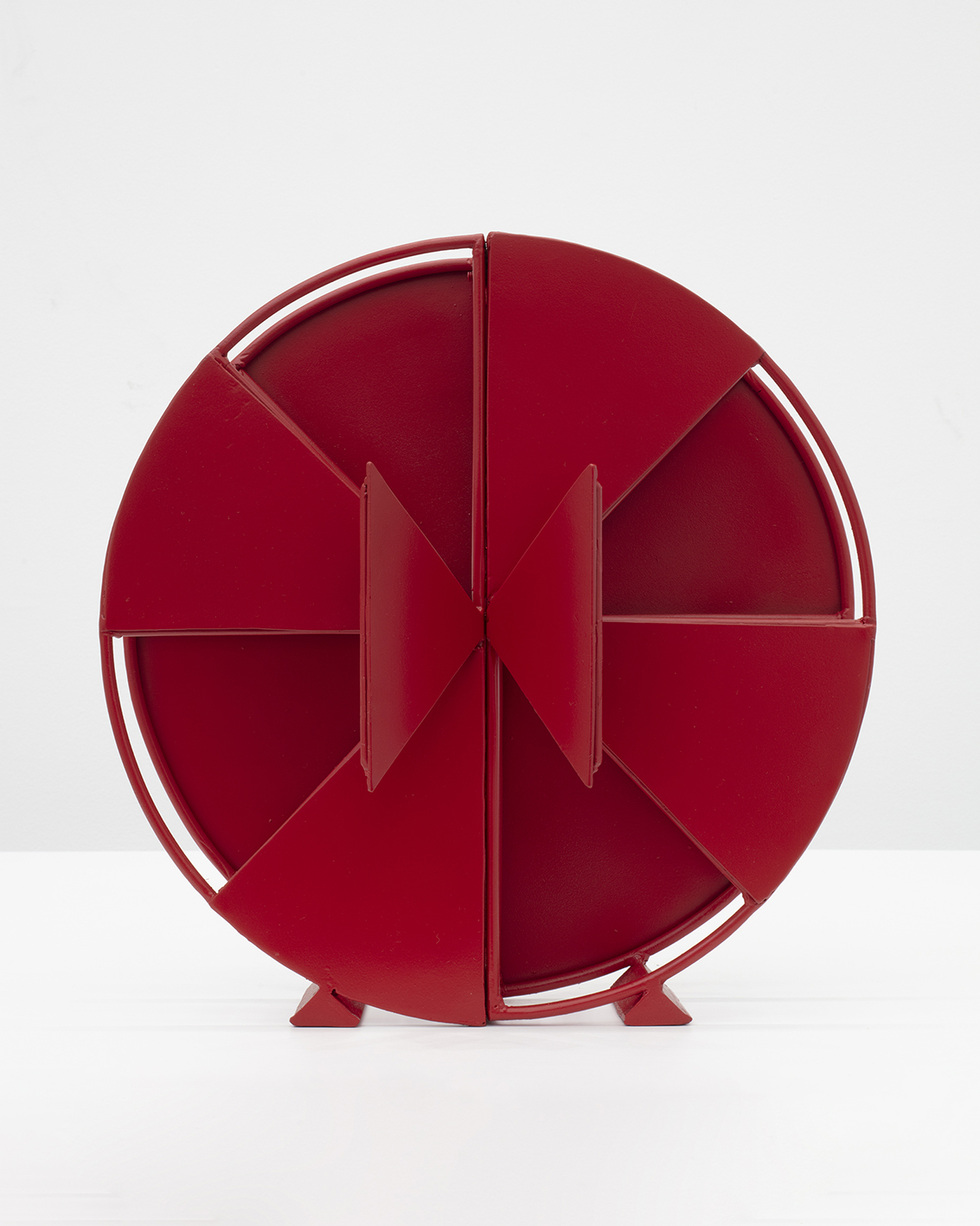
Hierro laminado y pintado
40 x 40 x 20 cm
Laminated and painted iron
15.75 x 15.75 x 7.87 in

Metal laqueada
40 x 40.5 x 25 cm
Lacquered metal
15.75 x 15.94 x 9.84 in
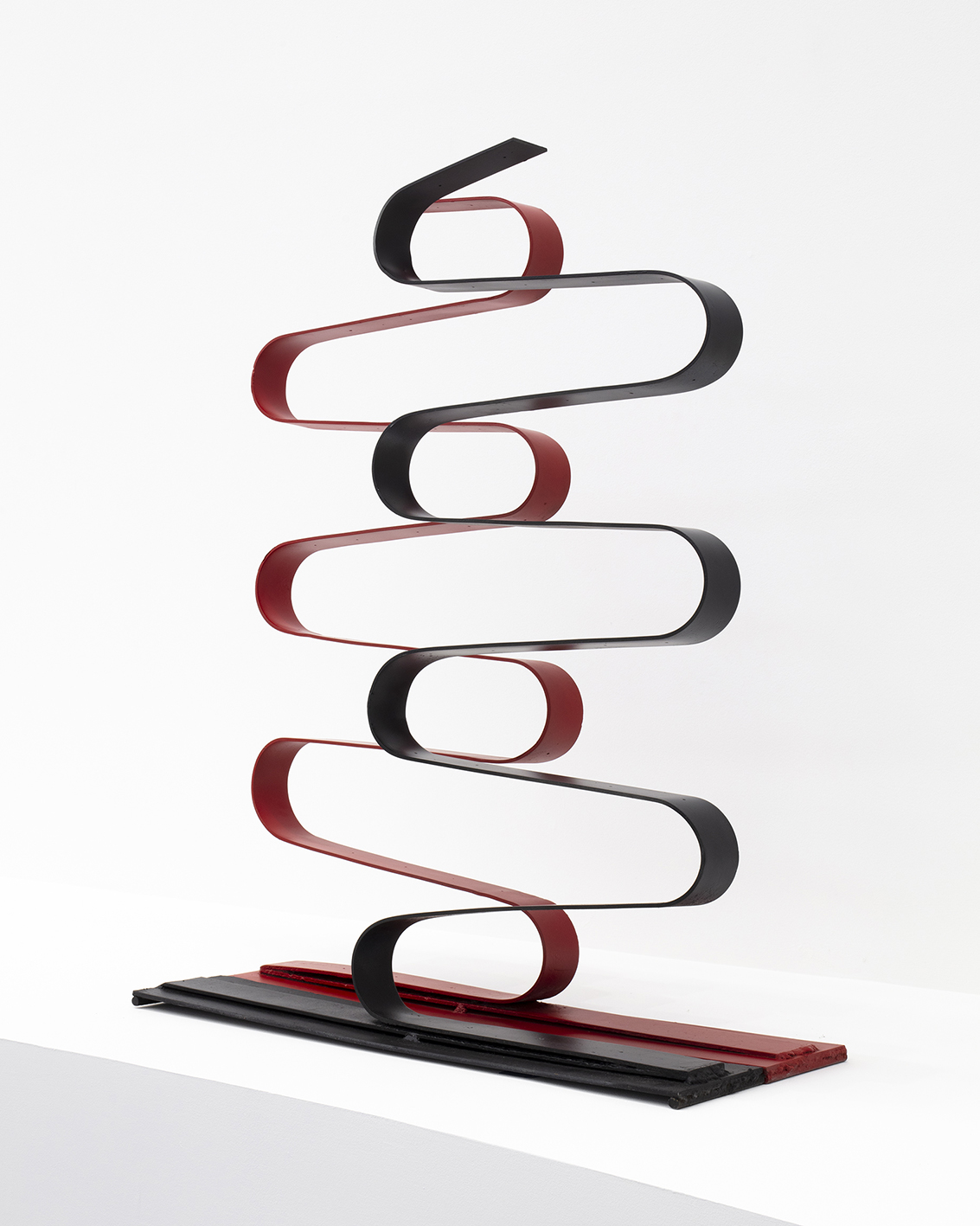
Hierro laminado y pintado
114 x 90.5 x 41 cm
Laminated and painted iron
44.88 x 35.63 x 16.14 in
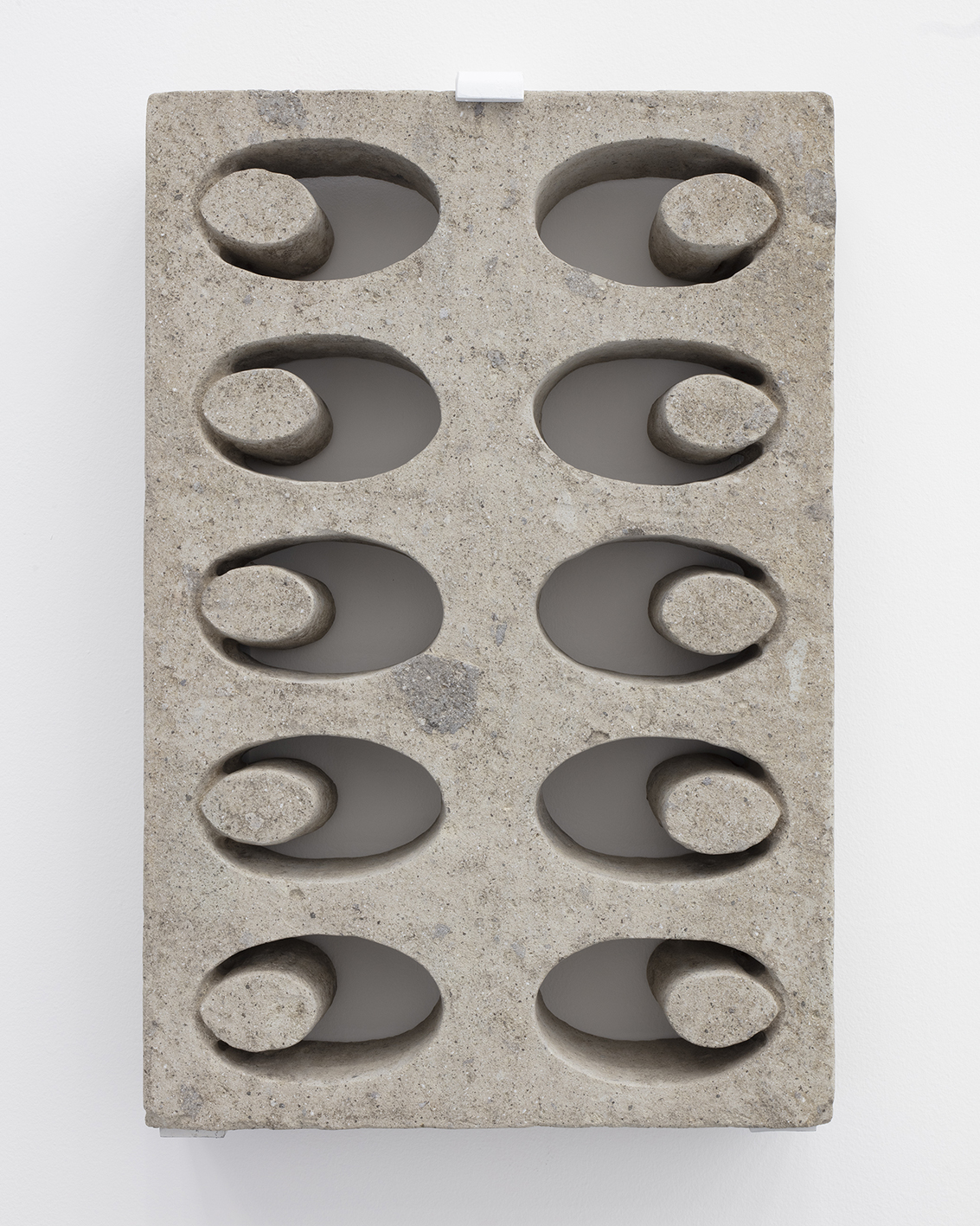
Piedra de cantera tallada a mano
59 x 39 x 11 cm
Hand-carved quarry stone
23.23 x 15.35 x 4.33 in

Piedra de cantera tallada a mano
93 x 44.5 x 28 cm
Hand-carved quarry stone
36.61 x 17.52 x 11.02 in

Obsidiana y metal tallado a mano
16.5 x 14.5 x 5 cm
Hand carved black obsidian and iron
6.5 x 5.71 x 1.97 in

Obsidiana roja tallada a mano y metal
15 x 12.5 x 5 cm
Hand carved red obsidianan and iron
5.91 x 4.92 x 1.97 in

Hierro laminado
32 x 20 x 19 cm
Laminated iron
32 x 20 x 19 cm
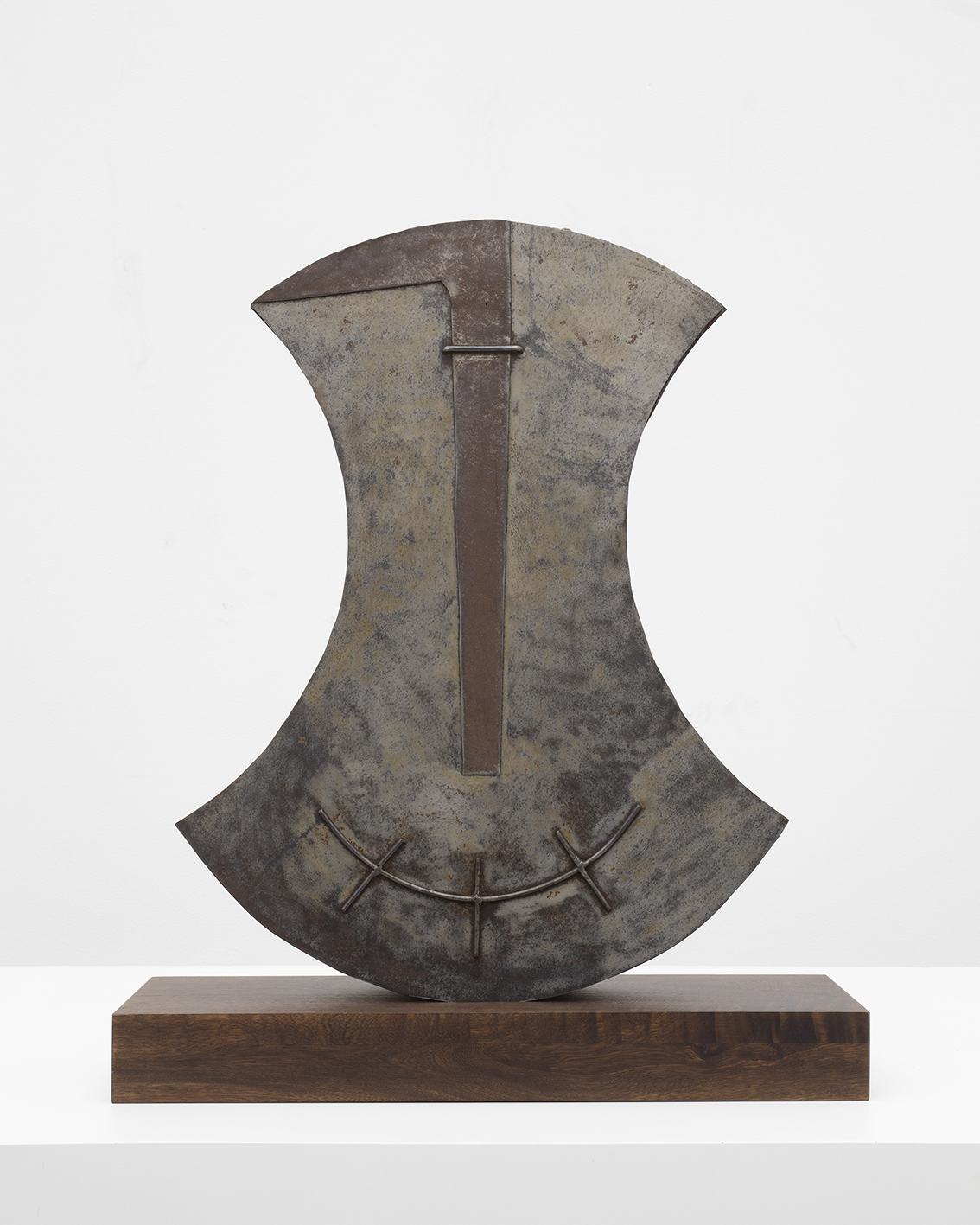
Hierro laminado
73 x 60 x 22 cm
Laminated iron
28.74 x 23.62 x 8.66 in

Cantera tallada a mano
80 x 50 x 34 cm
Hand-carved quarry stone
31.5 x 19.69 x 13.39 in

Cantera tallada a mano
75 x 56 x 41 cm
Hand-carved quarry stone
29.53 x 22.05 x 16.14 in
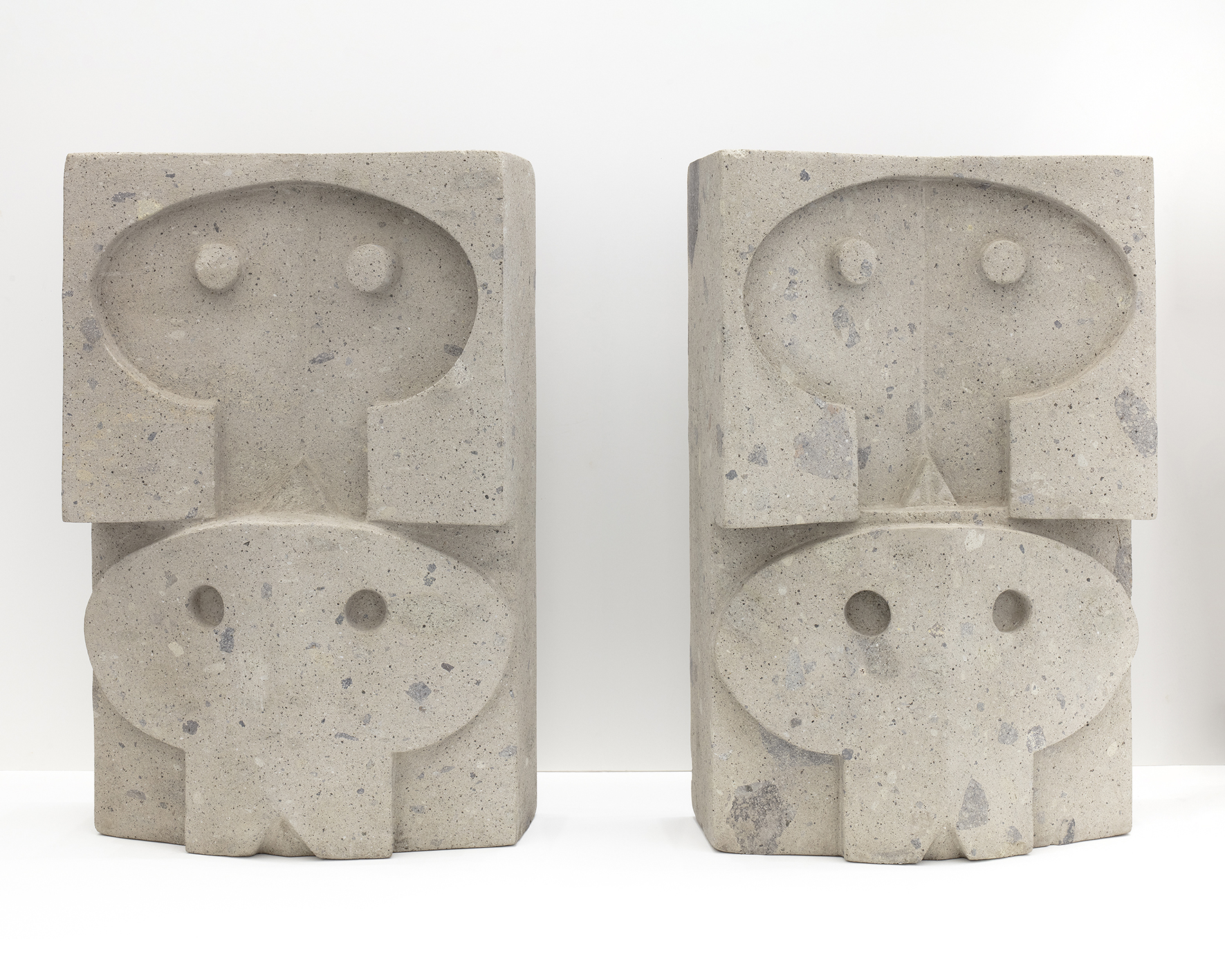
Díptico de esculturas de piedra de cantera talladas a mano
Dimensiones cada una: 63 x 40 x 20.5 cm
Diptych of hand-carved quarry stone sculptures
Dimensions (each): 24.8 x 15.75 x 8.07 in
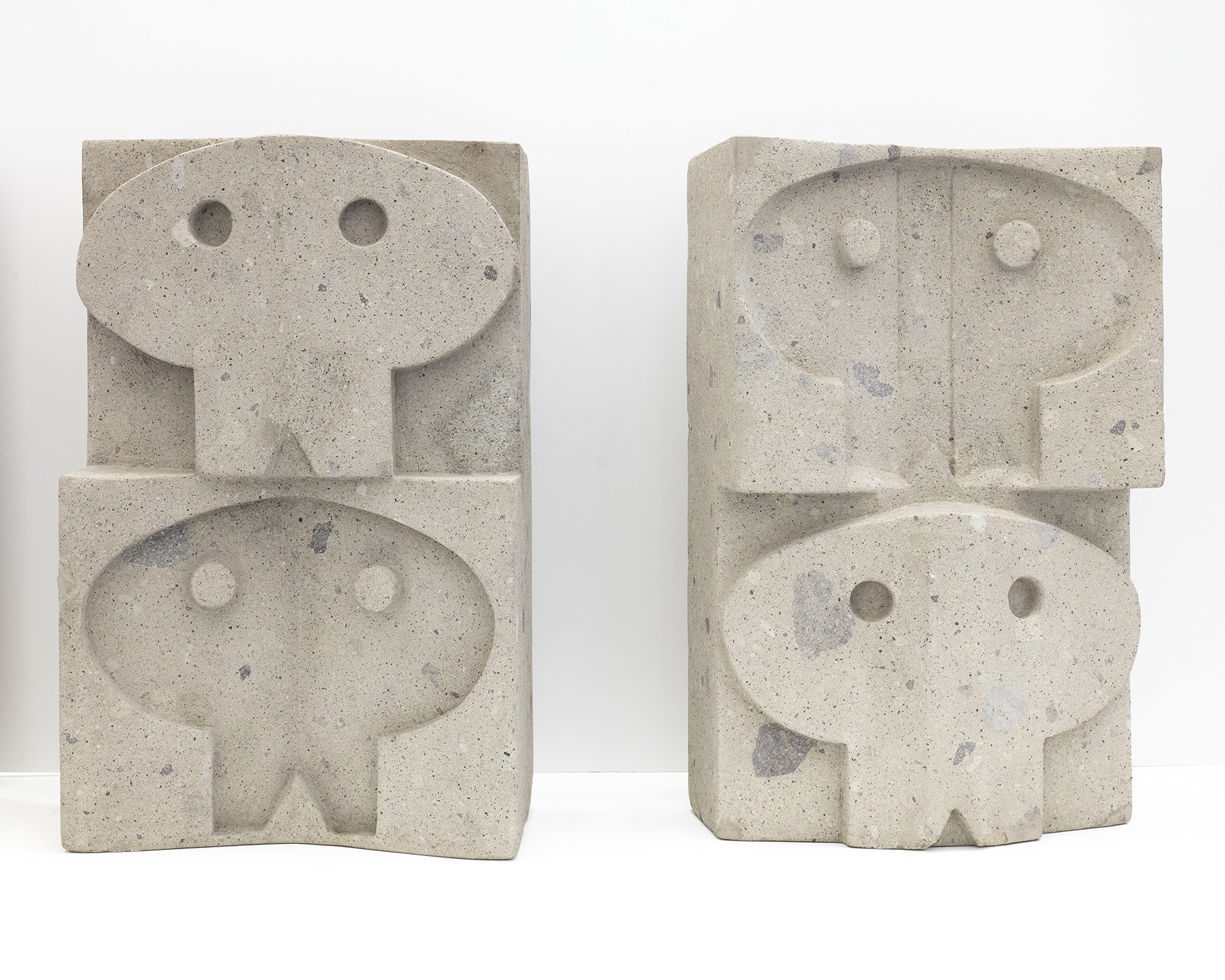
Díptico de esculturas de piedra de cantera talladas a mano
Dimensiones cada una: 63 x 40 x 20.5 cm
Diptych of hand-carved quarry stone sculptures
Dimensions (each): 24.8 x 15.75 x 8.07 in
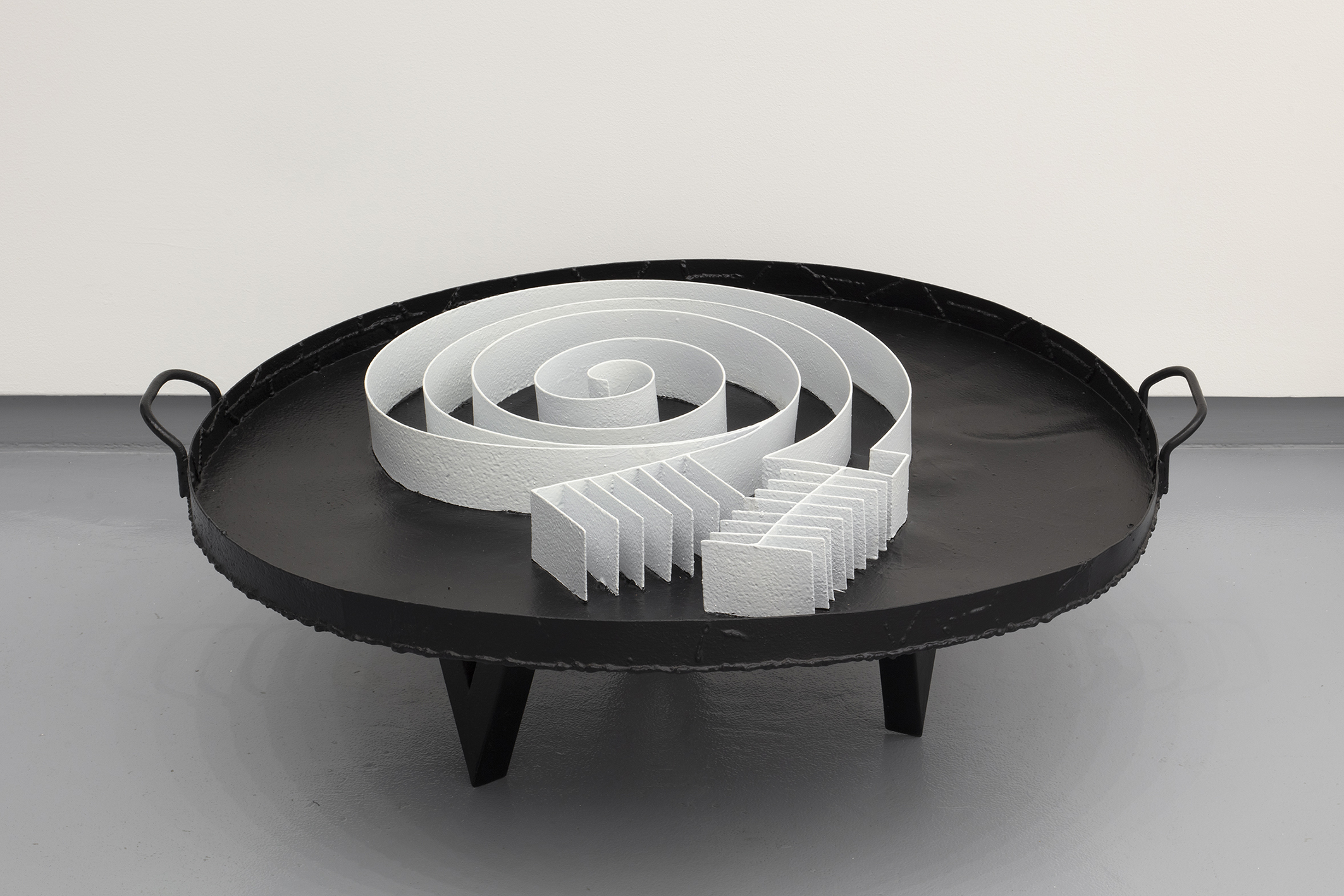
Hierro laminado y pintado
33.5 x 98.5 x 90 cm
Laminated and painted iron
13.19 x 38.78 x 35.43 in

Hierro forjado, laminado y soldado
53 x 20 x 25 cm
Forged, laminated and welded iron
20.87 x 7.87 x 9.84 in

Hierro forjado, laminado y soldado
60 x 24 x 22 cm
Forged, laminated and welded iron
23.62 x 9.45 x 8.66 in
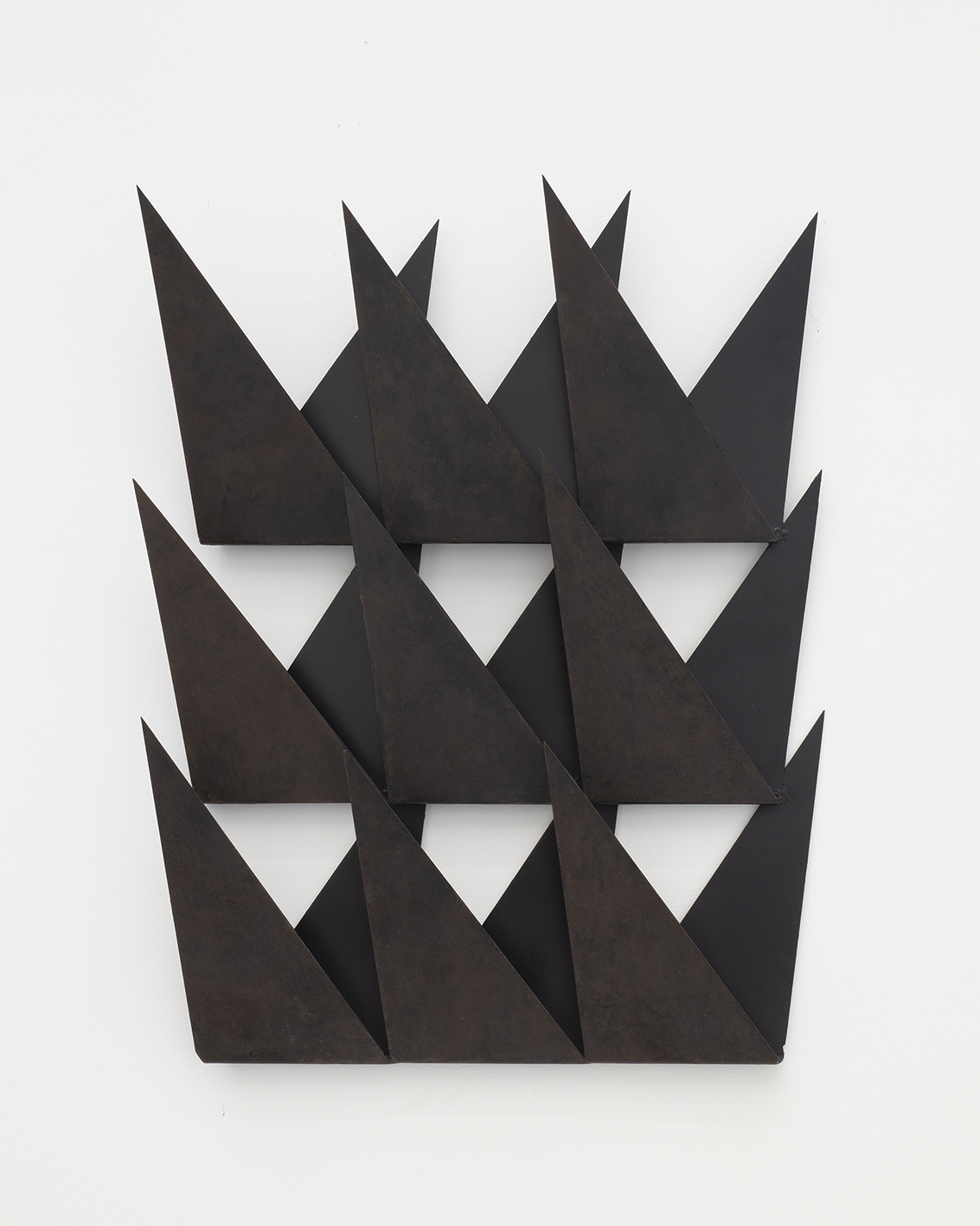
Hierro laminado y pintado
81 x 63 x 12 cm
Laminated and painted iron
31.89 x 24.8 x 4.72 in

Hierro forjado, laminado y soldado
14 x 19 cm
Forged, laminated and welded iron
5.51 x 7.48 in

Hierro forjado, laminado y soldado
56 x 20 x 20 cm
Forged, laminated and welded iron
22.05 x 7.87 x 7.87 in

Hierro forjado, laminado y soldado
54 x 15 x 15 cm
Forged, laminated and welded iron
21.26 x 5.91 x 5.91 in
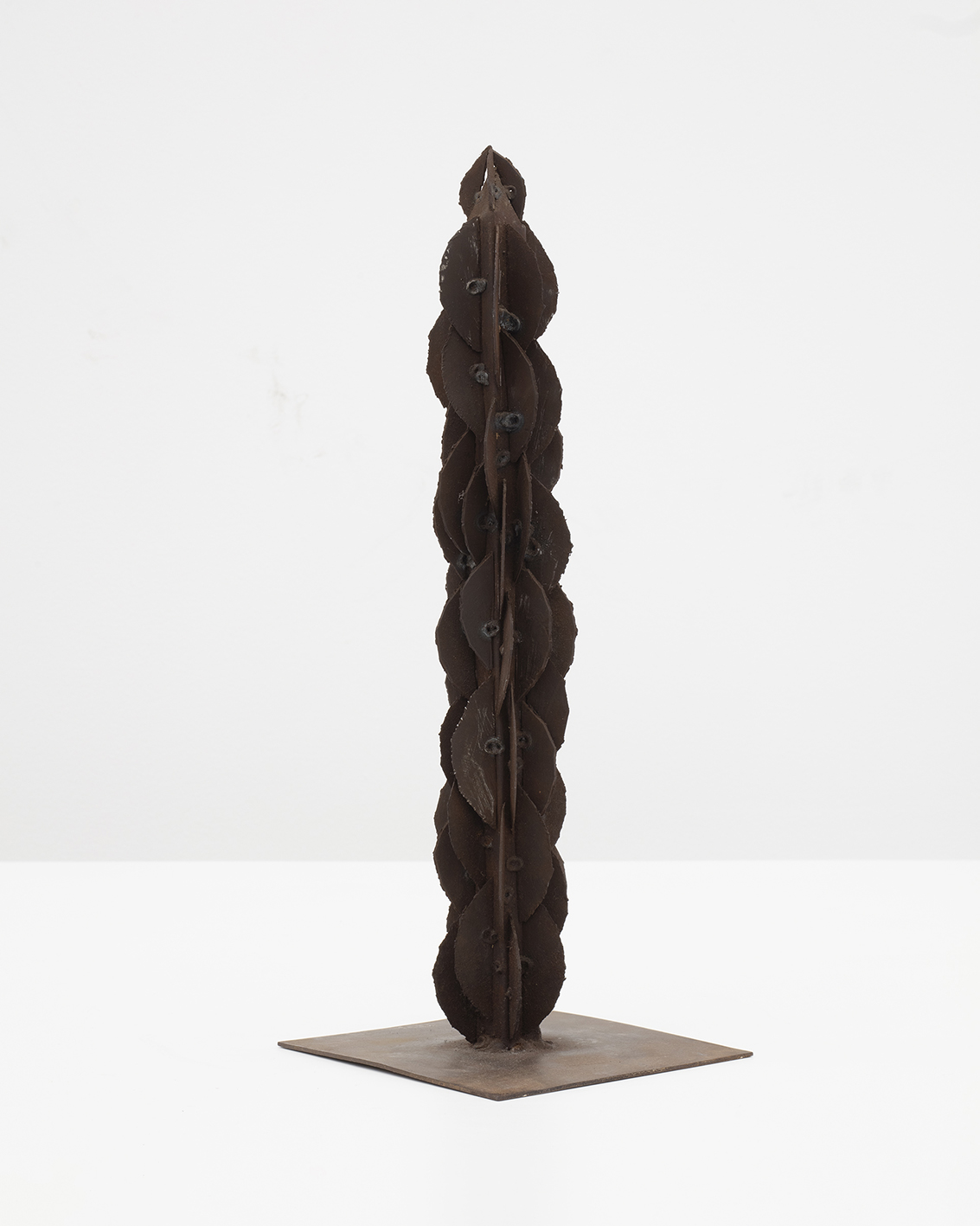
Hierro forjado, laminado y soldado
38 x 13.5 x 13.5 cm
Hierro forjado, laminado y soldado
38 x 13.5 x 13.5 cm
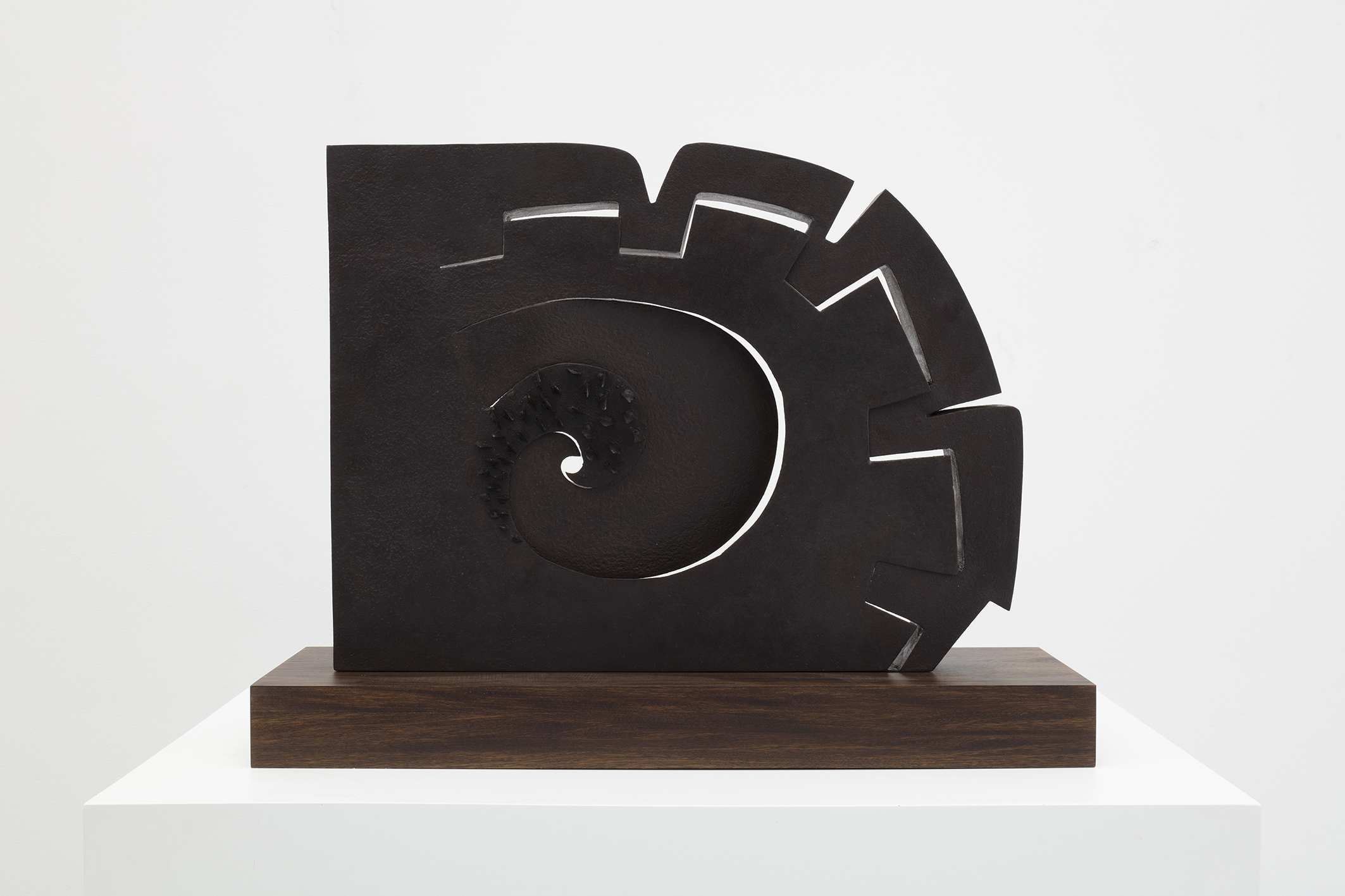
Hierro laminado
54 x 71 x 26 cm
Laminated iron
21.26 x 27.95 x 10.24 in
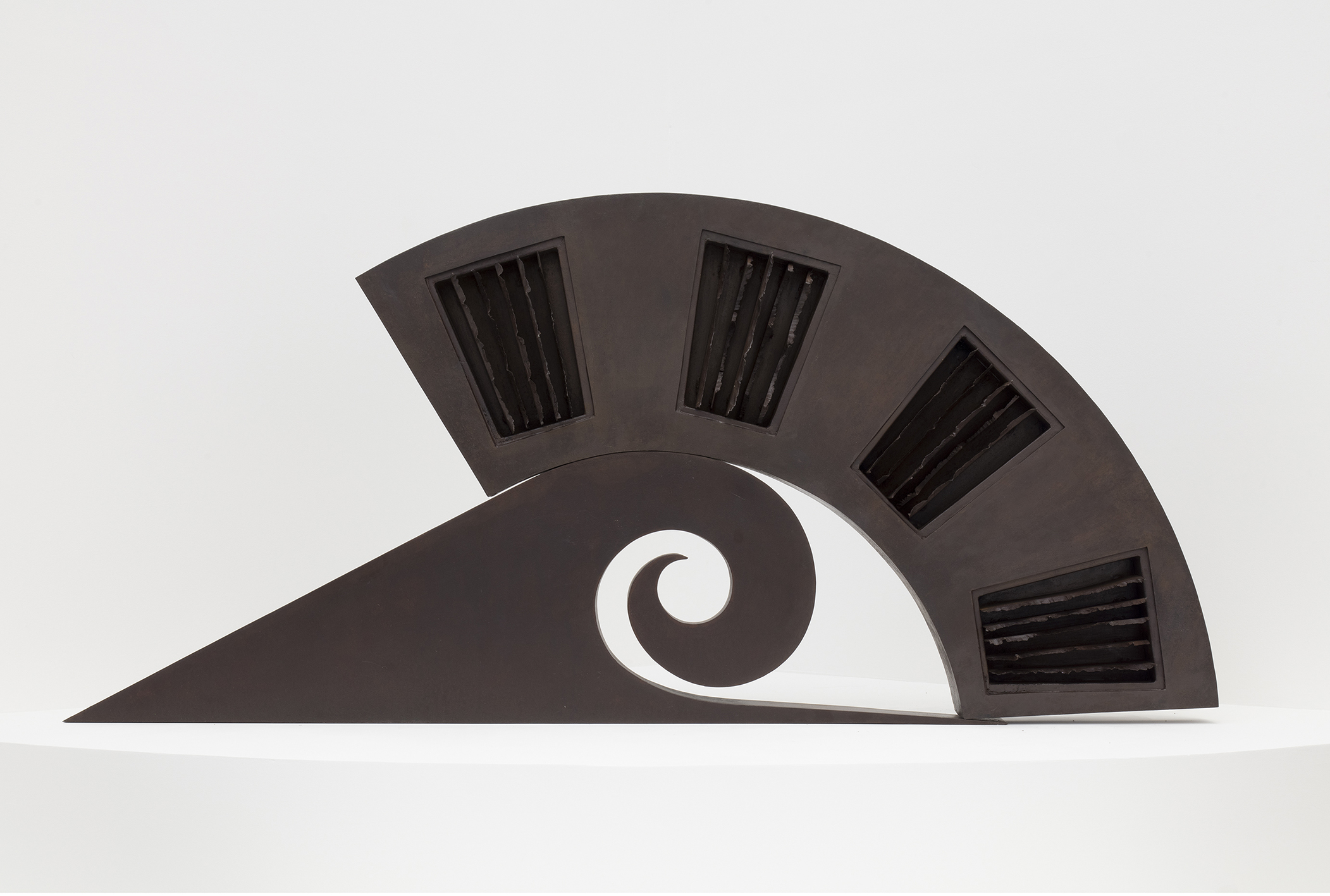
Hierro laminado
83 x 180 x 19 cm
Laminated iron
32.68 x 70.87 x 7.48 in
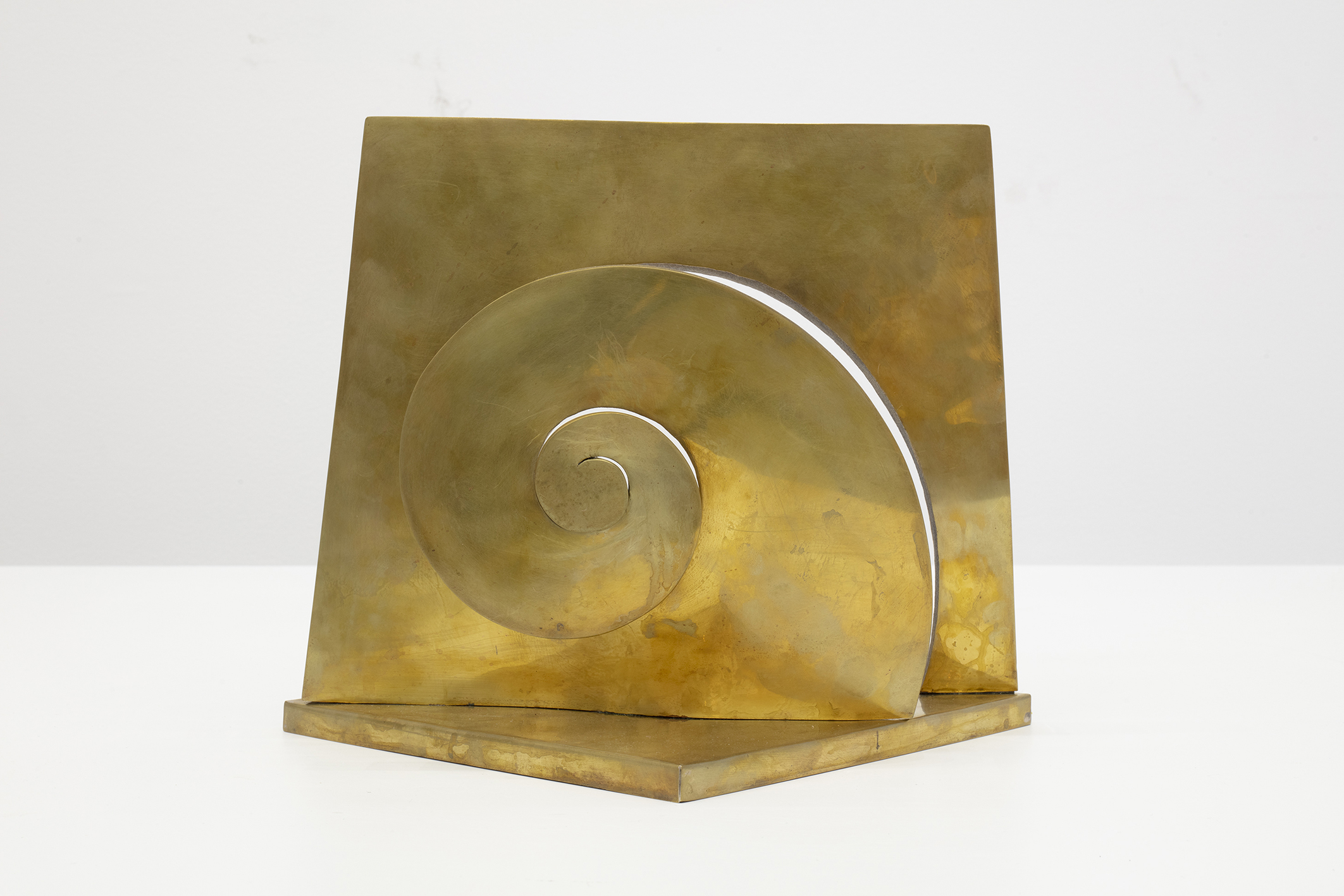
Metal dorado
23.5 x 28.5 x 28.5 cm
Gilded metal
9.25 x 11.22 x 11.22 in
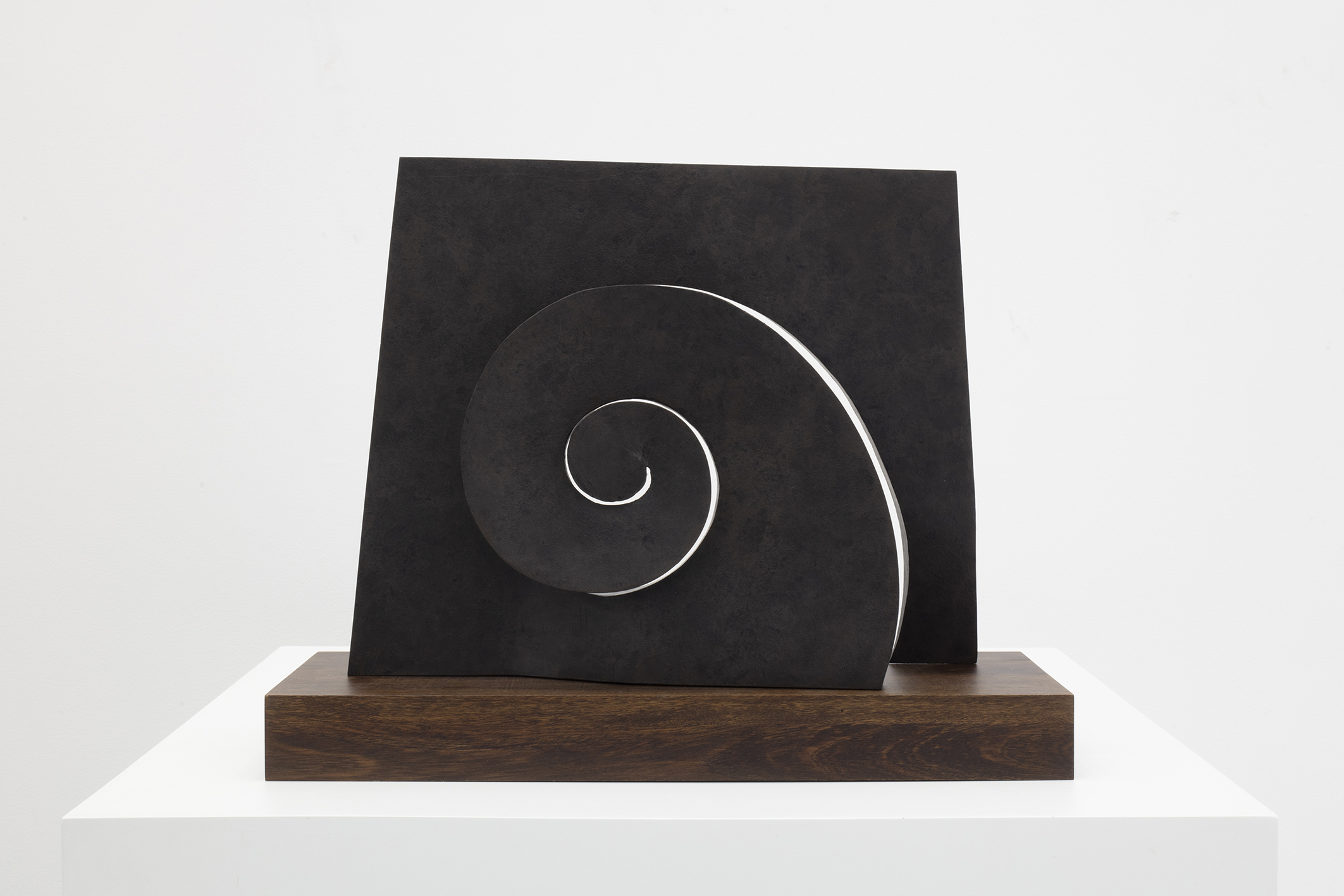
Hierro laminado
51.5 x 65 x 26 cm
Laminated iron
20.28 x 25.59 x 10.24 in

Hierro laminado
120ø x 30 cm
Laminated iron
47.24 x 11.81 in

Hierro laminado
120ø x 30 cm
Laminated iron
47.24 x 11.81 in
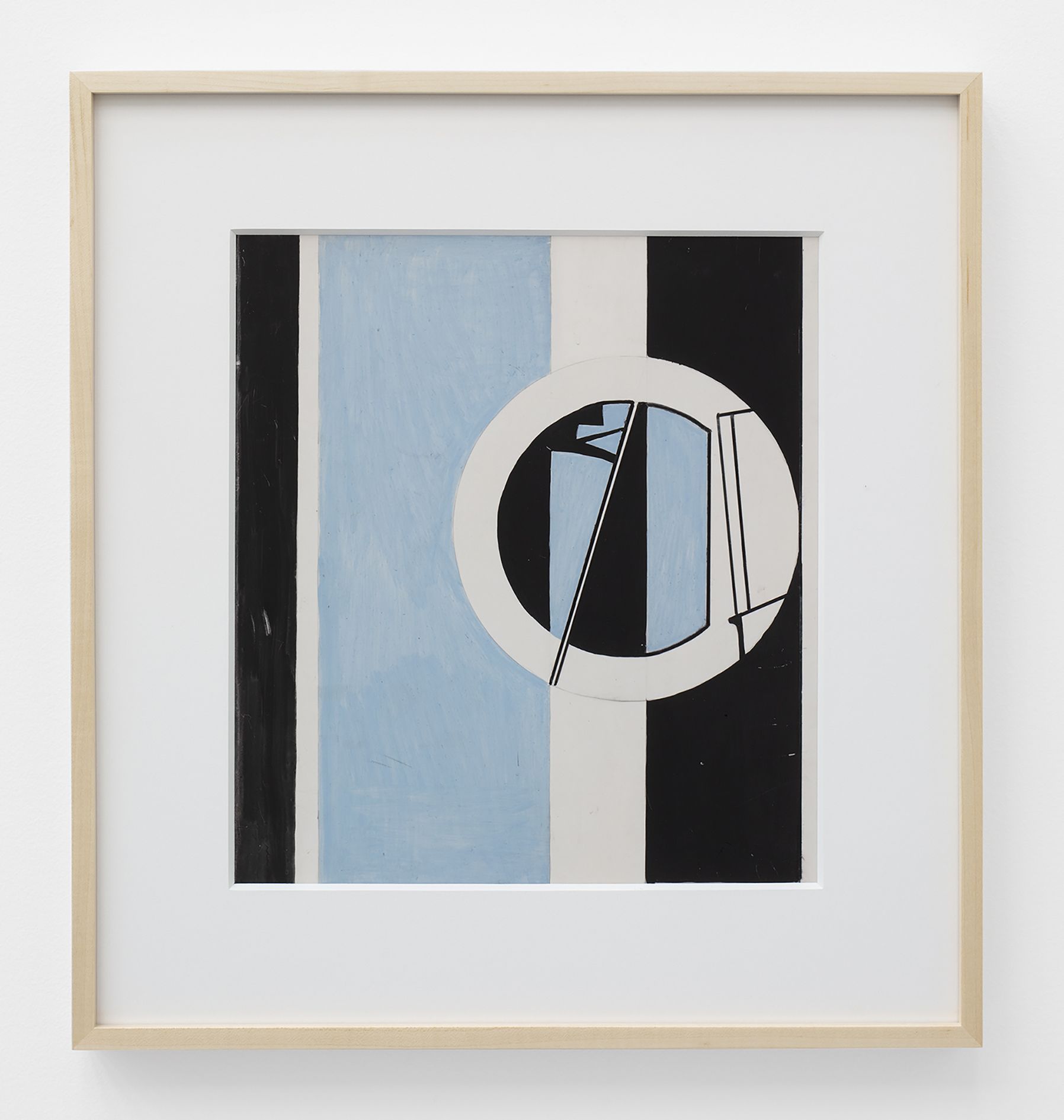
Tinta y marcador sobre tabla de madera
51.5 x 47 x 3.5 cm
What’s a Rich Text element?
What’s a Rich Text element?The rich text element allows you to create and format headings, paragraphs, blockquotes, images, and video all in one place instead of having to add and format them individually. Just double-click and easily create content.
The rich text element allows you to create and format headings, paragraphs, blockquotes, images, and video all in one place instead of having to add and format them individually. Just double-click and easily create content.Static and dynamic content editing
Static and dynamic content editingA rich text element can be used with static or dynamic content. For static content, just drop it into any page and begin editing. For dynamic content, add a rich text field to any collection and then connect a rich text element to that field in the settings panel. Voila!
A rich text element can be used with static or dynamic content. For static content, just drop it into any page and begin editing. For dynamic content, add a rich text field to any collection and then connect a rich text element to that field in the settings panel. Voila!How to customize formatting for each rich text
How to customize formatting for each rich textHeadings, paragraphs, blockquotes, figures, images, and figure captions can all be styled after a class is added to the rich text element using the "When inside of" nested selector system.
Headings, paragraphs, blockquotes, figures, images, and figure captions can all be styled after a class is added to the rich text element using the "When inside of" nested selector system.Ink and marker on wooden board
20.28 x 18.5 x 1.38 in
What’s a Rich Text element?
What’s a Rich Text element?The rich text element allows you to create and format headings, paragraphs, blockquotes, images, and video all in one place instead of having to add and format them individually. Just double-click and easily create content.
The rich text element allows you to create and format headings, paragraphs, blockquotes, images, and video all in one place instead of having to add and format them individually. Just double-click and easily create content.Static and dynamic content editing
Static and dynamic content editingA rich text element can be used with static or dynamic content. For static content, just drop it into any page and begin editing. For dynamic content, add a rich text field to any collection and then connect a rich text element to that field in the settings panel. Voila!
A rich text element can be used with static or dynamic content. For static content, just drop it into any page and begin editing. For dynamic content, add a rich text field to any collection and then connect a rich text element to that field in the settings panel. Voila!How to customize formatting for each rich text
How to customize formatting for each rich textHeadings, paragraphs, blockquotes, figures, images, and figure captions can all be styled after a class is added to the rich text element using the "When inside of" nested selector system.
Headings, paragraphs, blockquotes, figures, images, and figure captions can all be styled after a class is added to the rich text element using the "When inside of" nested selector system.
Collage y lápiz de color sobre papel
70 x 84.5 x 3.5 cm
What’s a Rich Text element?
What’s a Rich Text element?The rich text element allows you to create and format headings, paragraphs, blockquotes, images, and video all in one place instead of having to add and format them individually. Just double-click and easily create content.
The rich text element allows you to create and format headings, paragraphs, blockquotes, images, and video all in one place instead of having to add and format them individually. Just double-click and easily create content.Static and dynamic content editing
Static and dynamic content editingA rich text element can be used with static or dynamic content. For static content, just drop it into any page and begin editing. For dynamic content, add a rich text field to any collection and then connect a rich text element to that field in the settings panel. Voila!
A rich text element can be used with static or dynamic content. For static content, just drop it into any page and begin editing. For dynamic content, add a rich text field to any collection and then connect a rich text element to that field in the settings panel. Voila!How to customize formatting for each rich text
How to customize formatting for each rich textHeadings, paragraphs, blockquotes, figures, images, and figure captions can all be styled after a class is added to the rich text element using the "When inside of" nested selector system.
Headings, paragraphs, blockquotes, figures, images, and figure captions can all be styled after a class is added to the rich text element using the "When inside of" nested selector system.Collage and color pencil on paper
27.56 x 33.27 x 1.38 in
What’s a Rich Text element?
What’s a Rich Text element?The rich text element allows you to create and format headings, paragraphs, blockquotes, images, and video all in one place instead of having to add and format them individually. Just double-click and easily create content.
The rich text element allows you to create and format headings, paragraphs, blockquotes, images, and video all in one place instead of having to add and format them individually. Just double-click and easily create content.Static and dynamic content editing
Static and dynamic content editingA rich text element can be used with static or dynamic content. For static content, just drop it into any page and begin editing. For dynamic content, add a rich text field to any collection and then connect a rich text element to that field in the settings panel. Voila!
A rich text element can be used with static or dynamic content. For static content, just drop it into any page and begin editing. For dynamic content, add a rich text field to any collection and then connect a rich text element to that field in the settings panel. Voila!How to customize formatting for each rich text
How to customize formatting for each rich textHeadings, paragraphs, blockquotes, figures, images, and figure captions can all be styled after a class is added to the rich text element using the "When inside of" nested selector system.
Headings, paragraphs, blockquotes, figures, images, and figure captions can all be styled after a class is added to the rich text element using the "When inside of" nested selector system.
Madera laqueada
170 x 124.5 x 19 cm
What’s a Rich Text element?
What’s a Rich Text element?The rich text element allows you to create and format headings, paragraphs, blockquotes, images, and video all in one place instead of having to add and format them individually. Just double-click and easily create content.
The rich text element allows you to create and format headings, paragraphs, blockquotes, images, and video all in one place instead of having to add and format them individually. Just double-click and easily create content.Static and dynamic content editing
Static and dynamic content editingA rich text element can be used with static or dynamic content. For static content, just drop it into any page and begin editing. For dynamic content, add a rich text field to any collection and then connect a rich text element to that field in the settings panel. Voila!
A rich text element can be used with static or dynamic content. For static content, just drop it into any page and begin editing. For dynamic content, add a rich text field to any collection and then connect a rich text element to that field in the settings panel. Voila!How to customize formatting for each rich text
How to customize formatting for each rich textHeadings, paragraphs, blockquotes, figures, images, and figure captions can all be styled after a class is added to the rich text element using the "When inside of" nested selector system.
Headings, paragraphs, blockquotes, figures, images, and figure captions can all be styled after a class is added to the rich text element using the "When inside of" nested selector system.Lacquered wood
66.93 x 49.02 x 7.48 in
What’s a Rich Text element?
What’s a Rich Text element?The rich text element allows you to create and format headings, paragraphs, blockquotes, images, and video all in one place instead of having to add and format them individually. Just double-click and easily create content.
The rich text element allows you to create and format headings, paragraphs, blockquotes, images, and video all in one place instead of having to add and format them individually. Just double-click and easily create content.Static and dynamic content editing
Static and dynamic content editingA rich text element can be used with static or dynamic content. For static content, just drop it into any page and begin editing. For dynamic content, add a rich text field to any collection and then connect a rich text element to that field in the settings panel. Voila!
A rich text element can be used with static or dynamic content. For static content, just drop it into any page and begin editing. For dynamic content, add a rich text field to any collection and then connect a rich text element to that field in the settings panel. Voila!How to customize formatting for each rich text
How to customize formatting for each rich textHeadings, paragraphs, blockquotes, figures, images, and figure captions can all be styled after a class is added to the rich text element using the "When inside of" nested selector system.
Headings, paragraphs, blockquotes, figures, images, and figure captions can all be styled after a class is added to the rich text element using the "When inside of" nested selector system.
Madera laqueada
53.5 x 90 x 45 cm
What’s a Rich Text element?
What’s a Rich Text element?The rich text element allows you to create and format headings, paragraphs, blockquotes, images, and video all in one place instead of having to add and format them individually. Just double-click and easily create content.
The rich text element allows you to create and format headings, paragraphs, blockquotes, images, and video all in one place instead of having to add and format them individually. Just double-click and easily create content.Static and dynamic content editing
Static and dynamic content editingA rich text element can be used with static or dynamic content. For static content, just drop it into any page and begin editing. For dynamic content, add a rich text field to any collection and then connect a rich text element to that field in the settings panel. Voila!
A rich text element can be used with static or dynamic content. For static content, just drop it into any page and begin editing. For dynamic content, add a rich text field to any collection and then connect a rich text element to that field in the settings panel. Voila!How to customize formatting for each rich text
How to customize formatting for each rich textHeadings, paragraphs, blockquotes, figures, images, and figure captions can all be styled after a class is added to the rich text element using the "When inside of" nested selector system.
Headings, paragraphs, blockquotes, figures, images, and figure captions can all be styled after a class is added to the rich text element using the "When inside of" nested selector system.Lacquered wood
53.5 x 90 x 45 cm
What’s a Rich Text element?
What’s a Rich Text element?The rich text element allows you to create and format headings, paragraphs, blockquotes, images, and video all in one place instead of having to add and format them individually. Just double-click and easily create content.
The rich text element allows you to create and format headings, paragraphs, blockquotes, images, and video all in one place instead of having to add and format them individually. Just double-click and easily create content.Static and dynamic content editing
Static and dynamic content editingA rich text element can be used with static or dynamic content. For static content, just drop it into any page and begin editing. For dynamic content, add a rich text field to any collection and then connect a rich text element to that field in the settings panel. Voila!
A rich text element can be used with static or dynamic content. For static content, just drop it into any page and begin editing. For dynamic content, add a rich text field to any collection and then connect a rich text element to that field in the settings panel. Voila!How to customize formatting for each rich text
How to customize formatting for each rich textHeadings, paragraphs, blockquotes, figures, images, and figure captions can all be styled after a class is added to the rich text element using the "When inside of" nested selector system.
Headings, paragraphs, blockquotes, figures, images, and figure captions can all be styled after a class is added to the rich text element using the "When inside of" nested selector system.
Grafito, lápiz de color y collage sobre papel
90 x 150 x 3.5 cm
What’s a Rich Text element?
What’s a Rich Text element?The rich text element allows you to create and format headings, paragraphs, blockquotes, images, and video all in one place instead of having to add and format them individually. Just double-click and easily create content.
The rich text element allows you to create and format headings, paragraphs, blockquotes, images, and video all in one place instead of having to add and format them individually. Just double-click and easily create content.Static and dynamic content editing
Static and dynamic content editingA rich text element can be used with static or dynamic content. For static content, just drop it into any page and begin editing. For dynamic content, add a rich text field to any collection and then connect a rich text element to that field in the settings panel. Voila!
A rich text element can be used with static or dynamic content. For static content, just drop it into any page and begin editing. For dynamic content, add a rich text field to any collection and then connect a rich text element to that field in the settings panel. Voila!How to customize formatting for each rich text
How to customize formatting for each rich textHeadings, paragraphs, blockquotes, figures, images, and figure captions can all be styled after a class is added to the rich text element using the "When inside of" nested selector system.
Headings, paragraphs, blockquotes, figures, images, and figure captions can all be styled after a class is added to the rich text element using the "When inside of" nested selector system.Graphite, color pencil and collage on paper
35.43 x 59.06 x 1.38 in
What’s a Rich Text element?
What’s a Rich Text element?The rich text element allows you to create and format headings, paragraphs, blockquotes, images, and video all in one place instead of having to add and format them individually. Just double-click and easily create content.
The rich text element allows you to create and format headings, paragraphs, blockquotes, images, and video all in one place instead of having to add and format them individually. Just double-click and easily create content.Static and dynamic content editing
Static and dynamic content editingA rich text element can be used with static or dynamic content. For static content, just drop it into any page and begin editing. For dynamic content, add a rich text field to any collection and then connect a rich text element to that field in the settings panel. Voila!
A rich text element can be used with static or dynamic content. For static content, just drop it into any page and begin editing. For dynamic content, add a rich text field to any collection and then connect a rich text element to that field in the settings panel. Voila!How to customize formatting for each rich text
How to customize formatting for each rich textHeadings, paragraphs, blockquotes, figures, images, and figure captions can all be styled after a class is added to the rich text element using the "When inside of" nested selector system.
Headings, paragraphs, blockquotes, figures, images, and figure captions can all be styled after a class is added to the rich text element using the "When inside of" nested selector system.
Collage: collage y graffito sobre papel Maqueta: Madera laqueada y base de aluminio
Collage: 42 x 55 x 5 cm Maqueta: 48.5 x 70 x 45 cm
What’s a Rich Text element?
What’s a Rich Text element?The rich text element allows you to create and format headings, paragraphs, blockquotes, images, and video all in one place instead of having to add and format them individually. Just double-click and easily create content.
The rich text element allows you to create and format headings, paragraphs, blockquotes, images, and video all in one place instead of having to add and format them individually. Just double-click and easily create content.Static and dynamic content editing
Static and dynamic content editingA rich text element can be used with static or dynamic content. For static content, just drop it into any page and begin editing. For dynamic content, add a rich text field to any collection and then connect a rich text element to that field in the settings panel. Voila!
A rich text element can be used with static or dynamic content. For static content, just drop it into any page and begin editing. For dynamic content, add a rich text field to any collection and then connect a rich text element to that field in the settings panel. Voila!How to customize formatting for each rich text
How to customize formatting for each rich textHeadings, paragraphs, blockquotes, figures, images, and figure captions can all be styled after a class is added to the rich text element using the "When inside of" nested selector system.
Headings, paragraphs, blockquotes, figures, images, and figure captions can all be styled after a class is added to the rich text element using the "When inside of" nested selector system.Collage: collage and graphite on paper Model: Lacquered wood and aluminum base
Collage: 16.54 x 21.65 x 1.97 in Model: 19.09 x 27.56 x 17.72 in
What’s a Rich Text element?
What’s a Rich Text element?The rich text element allows you to create and format headings, paragraphs, blockquotes, images, and video all in one place instead of having to add and format them individually. Just double-click and easily create content.
The rich text element allows you to create and format headings, paragraphs, blockquotes, images, and video all in one place instead of having to add and format them individually. Just double-click and easily create content.Static and dynamic content editing
Static and dynamic content editingA rich text element can be used with static or dynamic content. For static content, just drop it into any page and begin editing. For dynamic content, add a rich text field to any collection and then connect a rich text element to that field in the settings panel. Voila!
A rich text element can be used with static or dynamic content. For static content, just drop it into any page and begin editing. For dynamic content, add a rich text field to any collection and then connect a rich text element to that field in the settings panel. Voila!How to customize formatting for each rich text
How to customize formatting for each rich textHeadings, paragraphs, blockquotes, figures, images, and figure captions can all be styled after a class is added to the rich text element using the "When inside of" nested selector system.
Headings, paragraphs, blockquotes, figures, images, and figure captions can all be styled after a class is added to the rich text element using the "When inside of" nested selector system.
Collage y grafito sobre papel Maqueta: Madera laqueada y base de aluminio
Collage: 33 x 35.5 x 5 cm Maqueta: 26 x 40.5 x 23 cm
What’s a Rich Text element?
What’s a Rich Text element?The rich text element allows you to create and format headings, paragraphs, blockquotes, images, and video all in one place instead of having to add and format them individually. Just double-click and easily create content.
The rich text element allows you to create and format headings, paragraphs, blockquotes, images, and video all in one place instead of having to add and format them individually. Just double-click and easily create content.Static and dynamic content editing
Static and dynamic content editingA rich text element can be used with static or dynamic content. For static content, just drop it into any page and begin editing. For dynamic content, add a rich text field to any collection and then connect a rich text element to that field in the settings panel. Voila!
A rich text element can be used with static or dynamic content. For static content, just drop it into any page and begin editing. For dynamic content, add a rich text field to any collection and then connect a rich text element to that field in the settings panel. Voila!How to customize formatting for each rich text
How to customize formatting for each rich textHeadings, paragraphs, blockquotes, figures, images, and figure captions can all be styled after a class is added to the rich text element using the "When inside of" nested selector system.
Headings, paragraphs, blockquotes, figures, images, and figure captions can all be styled after a class is added to the rich text element using the "When inside of" nested selector system.Collage and graphite on paper Model: Lacquered wood and aluminum base
Collage: 12.99 x 13.98 x 1.97 in Model: 10.24 x 15.94 x 9.06 in
What’s a Rich Text element?
What’s a Rich Text element?The rich text element allows you to create and format headings, paragraphs, blockquotes, images, and video all in one place instead of having to add and format them individually. Just double-click and easily create content.
The rich text element allows you to create and format headings, paragraphs, blockquotes, images, and video all in one place instead of having to add and format them individually. Just double-click and easily create content.Static and dynamic content editing
Static and dynamic content editingA rich text element can be used with static or dynamic content. For static content, just drop it into any page and begin editing. For dynamic content, add a rich text field to any collection and then connect a rich text element to that field in the settings panel. Voila!
A rich text element can be used with static or dynamic content. For static content, just drop it into any page and begin editing. For dynamic content, add a rich text field to any collection and then connect a rich text element to that field in the settings panel. Voila!How to customize formatting for each rich text
How to customize formatting for each rich textHeadings, paragraphs, blockquotes, figures, images, and figure captions can all be styled after a class is added to the rich text element using the "When inside of" nested selector system.
Headings, paragraphs, blockquotes, figures, images, and figure captions can all be styled after a class is added to the rich text element using the "When inside of" nested selector system.
Cobre y yeso
Dimensiones variables
What’s a Rich Text element?
What’s a Rich Text element?The rich text element allows you to create and format headings, paragraphs, blockquotes, images, and video all in one place instead of having to add and format them individually. Just double-click and easily create content.
The rich text element allows you to create and format headings, paragraphs, blockquotes, images, and video all in one place instead of having to add and format them individually. Just double-click and easily create content.Static and dynamic content editing
Static and dynamic content editingA rich text element can be used with static or dynamic content. For static content, just drop it into any page and begin editing. For dynamic content, add a rich text field to any collection and then connect a rich text element to that field in the settings panel. Voila!
A rich text element can be used with static or dynamic content. For static content, just drop it into any page and begin editing. For dynamic content, add a rich text field to any collection and then connect a rich text element to that field in the settings panel. Voila!How to customize formatting for each rich text
How to customize formatting for each rich textHeadings, paragraphs, blockquotes, figures, images, and figure captions can all be styled after a class is added to the rich text element using the "When inside of" nested selector system.
Headings, paragraphs, blockquotes, figures, images, and figure captions can all be styled after a class is added to the rich text element using the "When inside of" nested selector system.Copper and plaster
Variable dimensions
What’s a Rich Text element?
What’s a Rich Text element?The rich text element allows you to create and format headings, paragraphs, blockquotes, images, and video all in one place instead of having to add and format them individually. Just double-click and easily create content.
The rich text element allows you to create and format headings, paragraphs, blockquotes, images, and video all in one place instead of having to add and format them individually. Just double-click and easily create content.Static and dynamic content editing
Static and dynamic content editingA rich text element can be used with static or dynamic content. For static content, just drop it into any page and begin editing. For dynamic content, add a rich text field to any collection and then connect a rich text element to that field in the settings panel. Voila!
A rich text element can be used with static or dynamic content. For static content, just drop it into any page and begin editing. For dynamic content, add a rich text field to any collection and then connect a rich text element to that field in the settings panel. Voila!How to customize formatting for each rich text
How to customize formatting for each rich textHeadings, paragraphs, blockquotes, figures, images, and figure captions can all be styled after a class is added to the rich text element using the "When inside of" nested selector system.
Headings, paragraphs, blockquotes, figures, images, and figure captions can all be styled after a class is added to the rich text element using the "When inside of" nested selector system.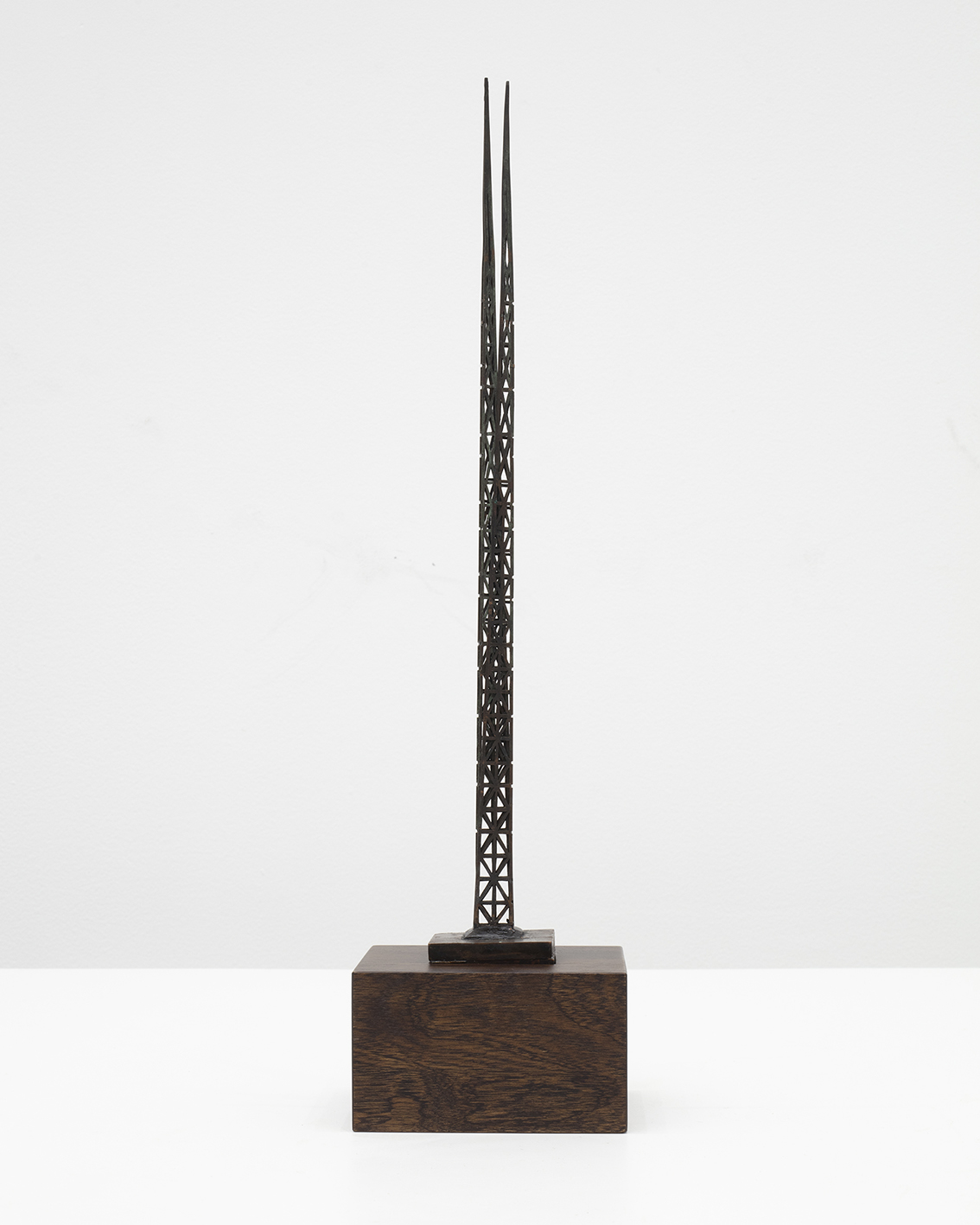
Hierro laminado
48 x 12 x 10 cm
What’s a Rich Text element?
What’s a Rich Text element?The rich text element allows you to create and format headings, paragraphs, blockquotes, images, and video all in one place instead of having to add and format them individually. Just double-click and easily create content.
The rich text element allows you to create and format headings, paragraphs, blockquotes, images, and video all in one place instead of having to add and format them individually. Just double-click and easily create content.Static and dynamic content editing
Static and dynamic content editingA rich text element can be used with static or dynamic content. For static content, just drop it into any page and begin editing. For dynamic content, add a rich text field to any collection and then connect a rich text element to that field in the settings panel. Voila!
A rich text element can be used with static or dynamic content. For static content, just drop it into any page and begin editing. For dynamic content, add a rich text field to any collection and then connect a rich text element to that field in the settings panel. Voila!How to customize formatting for each rich text
How to customize formatting for each rich textHeadings, paragraphs, blockquotes, figures, images, and figure captions can all be styled after a class is added to the rich text element using the "When inside of" nested selector system.
Headings, paragraphs, blockquotes, figures, images, and figure captions can all be styled after a class is added to the rich text element using the "When inside of" nested selector system.Laminated iron
18.9 x 4.72 x 3.94 in
What’s a Rich Text element?
What’s a Rich Text element?The rich text element allows you to create and format headings, paragraphs, blockquotes, images, and video all in one place instead of having to add and format them individually. Just double-click and easily create content.
The rich text element allows you to create and format headings, paragraphs, blockquotes, images, and video all in one place instead of having to add and format them individually. Just double-click and easily create content.Static and dynamic content editing
Static and dynamic content editingA rich text element can be used with static or dynamic content. For static content, just drop it into any page and begin editing. For dynamic content, add a rich text field to any collection and then connect a rich text element to that field in the settings panel. Voila!
A rich text element can be used with static or dynamic content. For static content, just drop it into any page and begin editing. For dynamic content, add a rich text field to any collection and then connect a rich text element to that field in the settings panel. Voila!How to customize formatting for each rich text
How to customize formatting for each rich textHeadings, paragraphs, blockquotes, figures, images, and figure captions can all be styled after a class is added to the rich text element using the "When inside of" nested selector system.
Headings, paragraphs, blockquotes, figures, images, and figure captions can all be styled after a class is added to the rich text element using the "When inside of" nested selector system.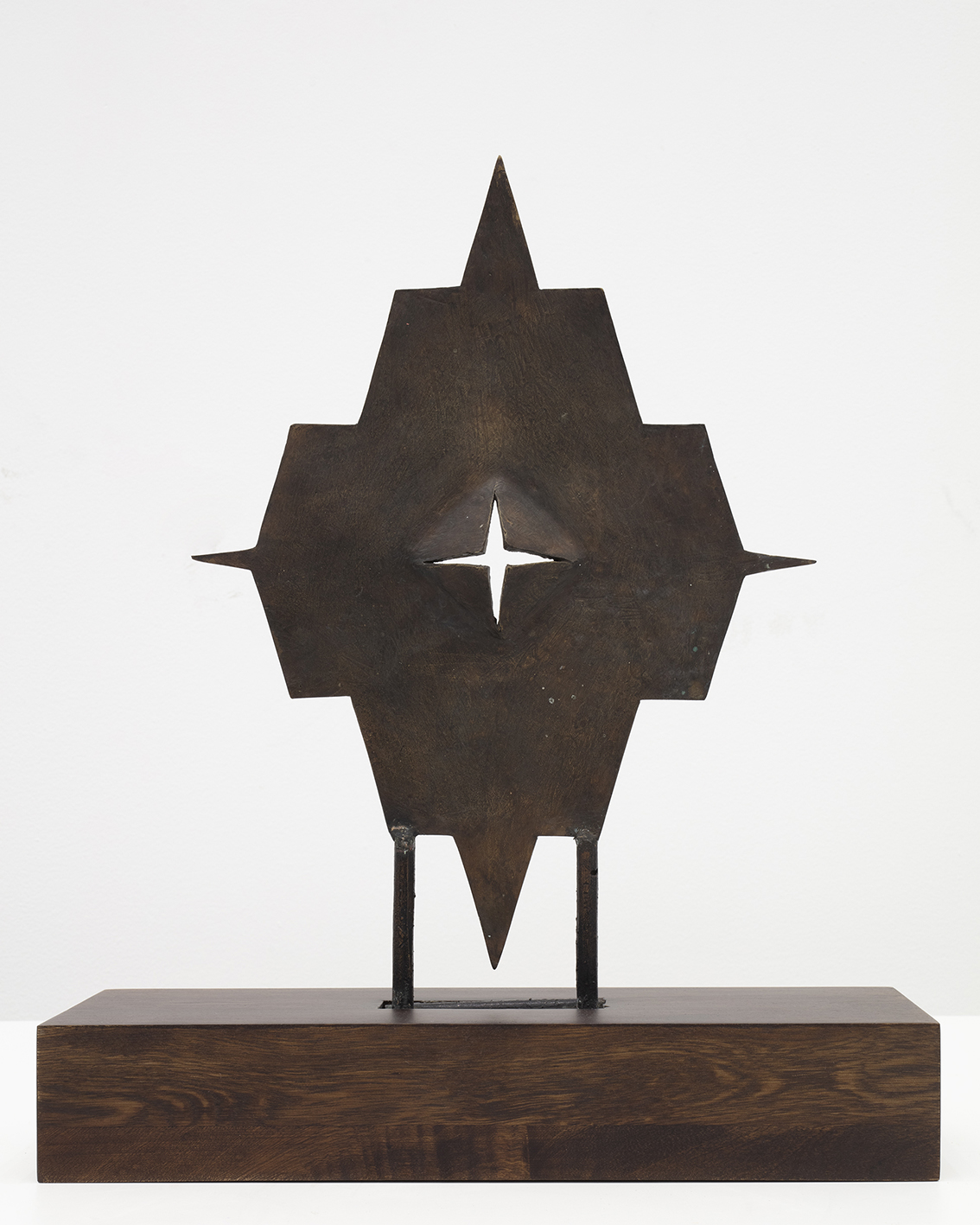
Hierro laminado y varilla de hierro
49 x 40 x 14 cm
What’s a Rich Text element?
What’s a Rich Text element?The rich text element allows you to create and format headings, paragraphs, blockquotes, images, and video all in one place instead of having to add and format them individually. Just double-click and easily create content.
The rich text element allows you to create and format headings, paragraphs, blockquotes, images, and video all in one place instead of having to add and format them individually. Just double-click and easily create content.Static and dynamic content editing
Static and dynamic content editingA rich text element can be used with static or dynamic content. For static content, just drop it into any page and begin editing. For dynamic content, add a rich text field to any collection and then connect a rich text element to that field in the settings panel. Voila!
A rich text element can be used with static or dynamic content. For static content, just drop it into any page and begin editing. For dynamic content, add a rich text field to any collection and then connect a rich text element to that field in the settings panel. Voila!How to customize formatting for each rich text
How to customize formatting for each rich textHeadings, paragraphs, blockquotes, figures, images, and figure captions can all be styled after a class is added to the rich text element using the "When inside of" nested selector system.
Headings, paragraphs, blockquotes, figures, images, and figure captions can all be styled after a class is added to the rich text element using the "When inside of" nested selector system.Laminated iron and iron rod
19.29 x 15.75 x 5.51 in
What’s a Rich Text element?
What’s a Rich Text element?The rich text element allows you to create and format headings, paragraphs, blockquotes, images, and video all in one place instead of having to add and format them individually. Just double-click and easily create content.
The rich text element allows you to create and format headings, paragraphs, blockquotes, images, and video all in one place instead of having to add and format them individually. Just double-click and easily create content.Static and dynamic content editing
Static and dynamic content editingA rich text element can be used with static or dynamic content. For static content, just drop it into any page and begin editing. For dynamic content, add a rich text field to any collection and then connect a rich text element to that field in the settings panel. Voila!
A rich text element can be used with static or dynamic content. For static content, just drop it into any page and begin editing. For dynamic content, add a rich text field to any collection and then connect a rich text element to that field in the settings panel. Voila!How to customize formatting for each rich text
How to customize formatting for each rich textHeadings, paragraphs, blockquotes, figures, images, and figure captions can all be styled after a class is added to the rich text element using the "When inside of" nested selector system.
Headings, paragraphs, blockquotes, figures, images, and figure captions can all be styled after a class is added to the rich text element using the "When inside of" nested selector system.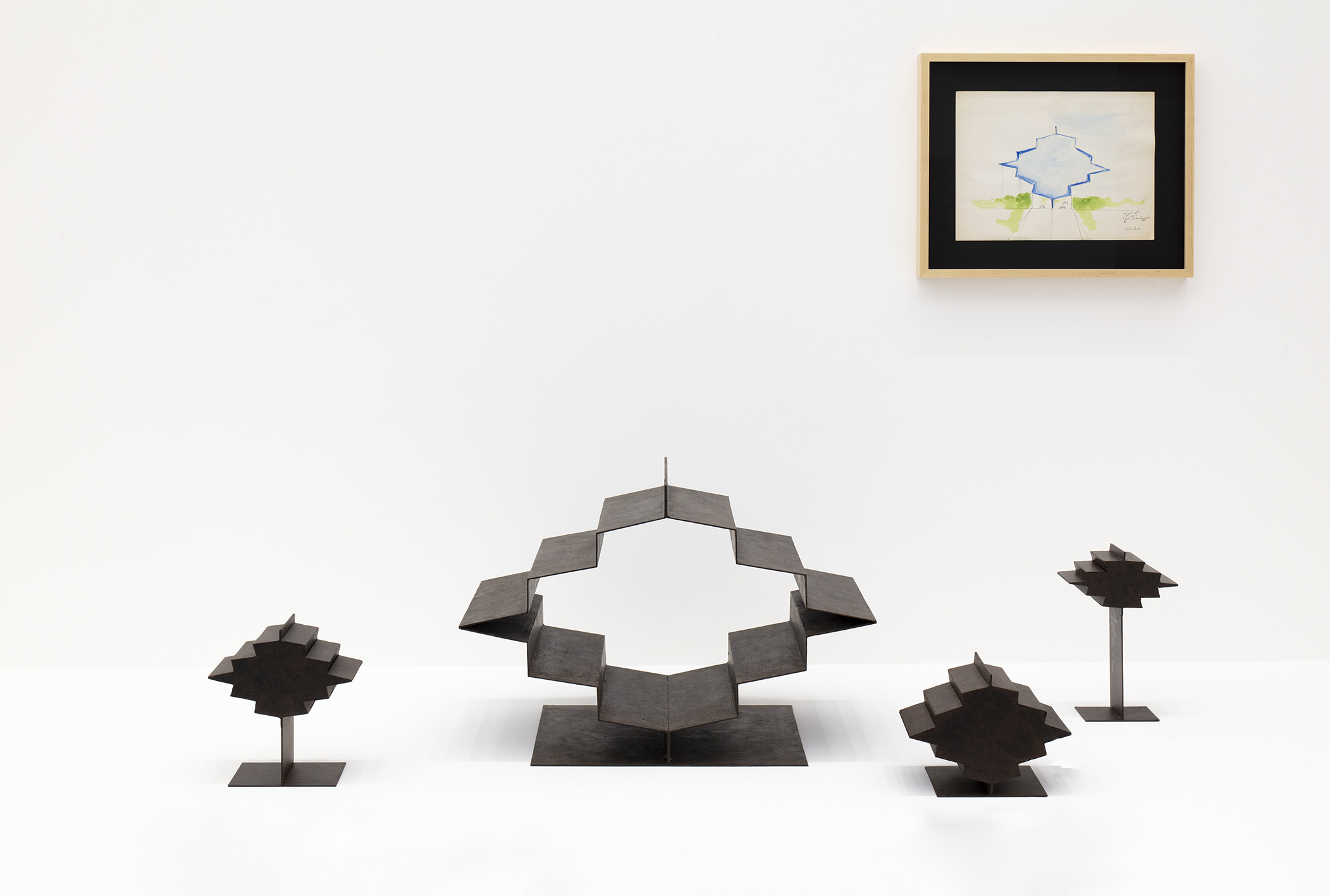
Acuarela y hierro laminado
Dimensiones variables
What’s a Rich Text element?
What’s a Rich Text element?The rich text element allows you to create and format headings, paragraphs, blockquotes, images, and video all in one place instead of having to add and format them individually. Just double-click and easily create content.
The rich text element allows you to create and format headings, paragraphs, blockquotes, images, and video all in one place instead of having to add and format them individually. Just double-click and easily create content.Static and dynamic content editing
Static and dynamic content editingA rich text element can be used with static or dynamic content. For static content, just drop it into any page and begin editing. For dynamic content, add a rich text field to any collection and then connect a rich text element to that field in the settings panel. Voila!
A rich text element can be used with static or dynamic content. For static content, just drop it into any page and begin editing. For dynamic content, add a rich text field to any collection and then connect a rich text element to that field in the settings panel. Voila!How to customize formatting for each rich text
How to customize formatting for each rich textHeadings, paragraphs, blockquotes, figures, images, and figure captions can all be styled after a class is added to the rich text element using the "When inside of" nested selector system.
Headings, paragraphs, blockquotes, figures, images, and figure captions can all be styled after a class is added to the rich text element using the "When inside of" nested selector system.Watercolor and laminated iron
Variable dimensions
What’s a Rich Text element?
What’s a Rich Text element?The rich text element allows you to create and format headings, paragraphs, blockquotes, images, and video all in one place instead of having to add and format them individually. Just double-click and easily create content.
The rich text element allows you to create and format headings, paragraphs, blockquotes, images, and video all in one place instead of having to add and format them individually. Just double-click and easily create content.Static and dynamic content editing
Static and dynamic content editingA rich text element can be used with static or dynamic content. For static content, just drop it into any page and begin editing. For dynamic content, add a rich text field to any collection and then connect a rich text element to that field in the settings panel. Voila!
A rich text element can be used with static or dynamic content. For static content, just drop it into any page and begin editing. For dynamic content, add a rich text field to any collection and then connect a rich text element to that field in the settings panel. Voila!How to customize formatting for each rich text
How to customize formatting for each rich textHeadings, paragraphs, blockquotes, figures, images, and figure captions can all be styled after a class is added to the rich text element using the "When inside of" nested selector system.
Headings, paragraphs, blockquotes, figures, images, and figure captions can all be styled after a class is added to the rich text element using the "When inside of" nested selector system.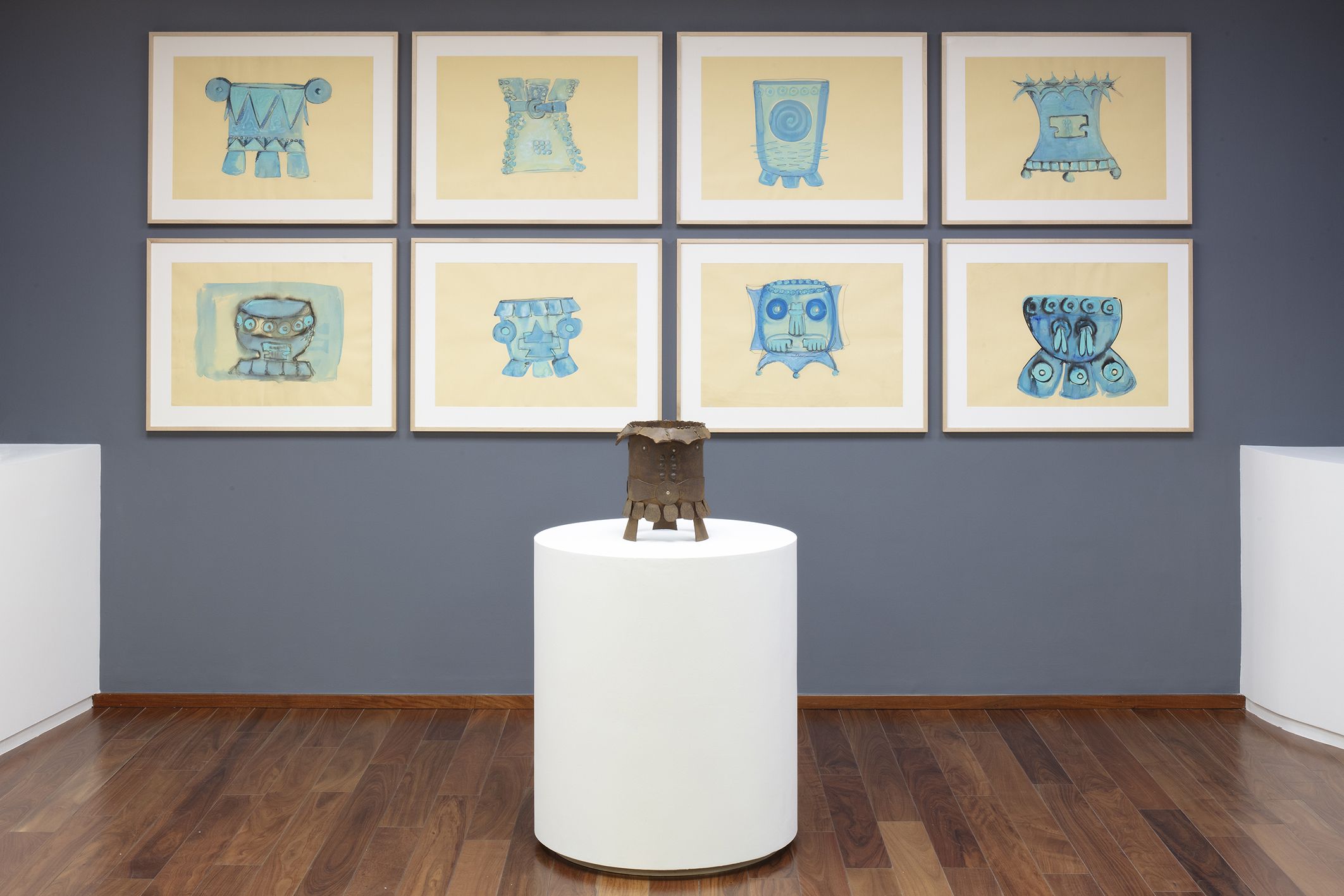
Políptico de ocho dibujos a lápiz, acuarela y pastel sobre papel, enmarcados en madera de arce con cristal de museo y escultura de hierro laminado
Dimensiones variables
What’s a Rich Text element?
What’s a Rich Text element?The rich text element allows you to create and format headings, paragraphs, blockquotes, images, and video all in one place instead of having to add and format them individually. Just double-click and easily create content.
The rich text element allows you to create and format headings, paragraphs, blockquotes, images, and video all in one place instead of having to add and format them individually. Just double-click and easily create content.Static and dynamic content editing
Static and dynamic content editingA rich text element can be used with static or dynamic content. For static content, just drop it into any page and begin editing. For dynamic content, add a rich text field to any collection and then connect a rich text element to that field in the settings panel. Voila!
A rich text element can be used with static or dynamic content. For static content, just drop it into any page and begin editing. For dynamic content, add a rich text field to any collection and then connect a rich text element to that field in the settings panel. Voila!How to customize formatting for each rich text
How to customize formatting for each rich textHeadings, paragraphs, blockquotes, figures, images, and figure captions can all be styled after a class is added to the rich text element using the "When inside of" nested selector system.
Headings, paragraphs, blockquotes, figures, images, and figure captions can all be styled after a class is added to the rich text element using the "When inside of" nested selector system.Polyptych of eight pencil, watercolor and pastel drawings on paper, framed in maple wood with museum glass and laminated iron sculpture
Variable dimensions
What’s a Rich Text element?
What’s a Rich Text element?The rich text element allows you to create and format headings, paragraphs, blockquotes, images, and video all in one place instead of having to add and format them individually. Just double-click and easily create content.
The rich text element allows you to create and format headings, paragraphs, blockquotes, images, and video all in one place instead of having to add and format them individually. Just double-click and easily create content.Static and dynamic content editing
Static and dynamic content editingA rich text element can be used with static or dynamic content. For static content, just drop it into any page and begin editing. For dynamic content, add a rich text field to any collection and then connect a rich text element to that field in the settings panel. Voila!
A rich text element can be used with static or dynamic content. For static content, just drop it into any page and begin editing. For dynamic content, add a rich text field to any collection and then connect a rich text element to that field in the settings panel. Voila!How to customize formatting for each rich text
How to customize formatting for each rich textHeadings, paragraphs, blockquotes, figures, images, and figure captions can all be styled after a class is added to the rich text element using the "When inside of" nested selector system.
Headings, paragraphs, blockquotes, figures, images, and figure captions can all be styled after a class is added to the rich text element using the "When inside of" nested selector system.
Hierro laminado
Model 1: 21.5 x 19.5 x 12.5 cm Model 2: 11.5 x 22.5 x 15.2 cm Model 3: 27.5 x 17.5 x 9.4 cm
What’s a Rich Text element?
What’s a Rich Text element?The rich text element allows you to create and format headings, paragraphs, blockquotes, images, and video all in one place instead of having to add and format them individually. Just double-click and easily create content.
The rich text element allows you to create and format headings, paragraphs, blockquotes, images, and video all in one place instead of having to add and format them individually. Just double-click and easily create content.Static and dynamic content editing
Static and dynamic content editingA rich text element can be used with static or dynamic content. For static content, just drop it into any page and begin editing. For dynamic content, add a rich text field to any collection and then connect a rich text element to that field in the settings panel. Voila!
A rich text element can be used with static or dynamic content. For static content, just drop it into any page and begin editing. For dynamic content, add a rich text field to any collection and then connect a rich text element to that field in the settings panel. Voila!How to customize formatting for each rich text
How to customize formatting for each rich textHeadings, paragraphs, blockquotes, figures, images, and figure captions can all be styled after a class is added to the rich text element using the "When inside of" nested selector system.
Headings, paragraphs, blockquotes, figures, images, and figure captions can all be styled after a class is added to the rich text element using the "When inside of" nested selector system.Laminated iron
Model 1: 8.46 x 7.68 x 4.92 in Model 2: 4.53 x 8.86 x 5.98 in Model 3: 10.83 x 6.89 x 3.7 in
What’s a Rich Text element?
What’s a Rich Text element?The rich text element allows you to create and format headings, paragraphs, blockquotes, images, and video all in one place instead of having to add and format them individually. Just double-click and easily create content.
The rich text element allows you to create and format headings, paragraphs, blockquotes, images, and video all in one place instead of having to add and format them individually. Just double-click and easily create content.Static and dynamic content editing
Static and dynamic content editingA rich text element can be used with static or dynamic content. For static content, just drop it into any page and begin editing. For dynamic content, add a rich text field to any collection and then connect a rich text element to that field in the settings panel. Voila!
A rich text element can be used with static or dynamic content. For static content, just drop it into any page and begin editing. For dynamic content, add a rich text field to any collection and then connect a rich text element to that field in the settings panel. Voila!How to customize formatting for each rich text
How to customize formatting for each rich textHeadings, paragraphs, blockquotes, figures, images, and figure captions can all be styled after a class is added to the rich text element using the "When inside of" nested selector system.
Headings, paragraphs, blockquotes, figures, images, and figure captions can all be styled after a class is added to the rich text element using the "When inside of" nested selector system.
Hierro laminado
23.5 x 16 x 16 cm
What’s a Rich Text element?
What’s a Rich Text element?The rich text element allows you to create and format headings, paragraphs, blockquotes, images, and video all in one place instead of having to add and format them individually. Just double-click and easily create content.
The rich text element allows you to create and format headings, paragraphs, blockquotes, images, and video all in one place instead of having to add and format them individually. Just double-click and easily create content.Static and dynamic content editing
Static and dynamic content editingA rich text element can be used with static or dynamic content. For static content, just drop it into any page and begin editing. For dynamic content, add a rich text field to any collection and then connect a rich text element to that field in the settings panel. Voila!
A rich text element can be used with static or dynamic content. For static content, just drop it into any page and begin editing. For dynamic content, add a rich text field to any collection and then connect a rich text element to that field in the settings panel. Voila!How to customize formatting for each rich text
How to customize formatting for each rich textHeadings, paragraphs, blockquotes, figures, images, and figure captions can all be styled after a class is added to the rich text element using the "When inside of" nested selector system.
Headings, paragraphs, blockquotes, figures, images, and figure captions can all be styled after a class is added to the rich text element using the "When inside of" nested selector system.Laminated iron
9.25 x 6.3 x 6.3 in
What’s a Rich Text element?
What’s a Rich Text element?The rich text element allows you to create and format headings, paragraphs, blockquotes, images, and video all in one place instead of having to add and format them individually. Just double-click and easily create content.
The rich text element allows you to create and format headings, paragraphs, blockquotes, images, and video all in one place instead of having to add and format them individually. Just double-click and easily create content.Static and dynamic content editing
Static and dynamic content editingA rich text element can be used with static or dynamic content. For static content, just drop it into any page and begin editing. For dynamic content, add a rich text field to any collection and then connect a rich text element to that field in the settings panel. Voila!
A rich text element can be used with static or dynamic content. For static content, just drop it into any page and begin editing. For dynamic content, add a rich text field to any collection and then connect a rich text element to that field in the settings panel. Voila!How to customize formatting for each rich text
How to customize formatting for each rich textHeadings, paragraphs, blockquotes, figures, images, and figure captions can all be styled after a class is added to the rich text element using the "When inside of" nested selector system.
Headings, paragraphs, blockquotes, figures, images, and figure captions can all be styled after a class is added to the rich text element using the "When inside of" nested selector system.
Hierro laminado
18 x 16 x 16 cm
What’s a Rich Text element?
What’s a Rich Text element?The rich text element allows you to create and format headings, paragraphs, blockquotes, images, and video all in one place instead of having to add and format them individually. Just double-click and easily create content.
The rich text element allows you to create and format headings, paragraphs, blockquotes, images, and video all in one place instead of having to add and format them individually. Just double-click and easily create content.Static and dynamic content editing
Static and dynamic content editingA rich text element can be used with static or dynamic content. For static content, just drop it into any page and begin editing. For dynamic content, add a rich text field to any collection and then connect a rich text element to that field in the settings panel. Voila!
A rich text element can be used with static or dynamic content. For static content, just drop it into any page and begin editing. For dynamic content, add a rich text field to any collection and then connect a rich text element to that field in the settings panel. Voila!How to customize formatting for each rich text
How to customize formatting for each rich textHeadings, paragraphs, blockquotes, figures, images, and figure captions can all be styled after a class is added to the rich text element using the "When inside of" nested selector system.
Headings, paragraphs, blockquotes, figures, images, and figure captions can all be styled after a class is added to the rich text element using the "When inside of" nested selector system.Laminated iron
7.09 x 6.3 x 6.3 in
What’s a Rich Text element?
What’s a Rich Text element?The rich text element allows you to create and format headings, paragraphs, blockquotes, images, and video all in one place instead of having to add and format them individually. Just double-click and easily create content.
The rich text element allows you to create and format headings, paragraphs, blockquotes, images, and video all in one place instead of having to add and format them individually. Just double-click and easily create content.Static and dynamic content editing
Static and dynamic content editingA rich text element can be used with static or dynamic content. For static content, just drop it into any page and begin editing. For dynamic content, add a rich text field to any collection and then connect a rich text element to that field in the settings panel. Voila!
A rich text element can be used with static or dynamic content. For static content, just drop it into any page and begin editing. For dynamic content, add a rich text field to any collection and then connect a rich text element to that field in the settings panel. Voila!How to customize formatting for each rich text
How to customize formatting for each rich textHeadings, paragraphs, blockquotes, figures, images, and figure captions can all be styled after a class is added to the rich text element using the "When inside of" nested selector system.
Headings, paragraphs, blockquotes, figures, images, and figure captions can all be styled after a class is added to the rich text element using the "When inside of" nested selector system.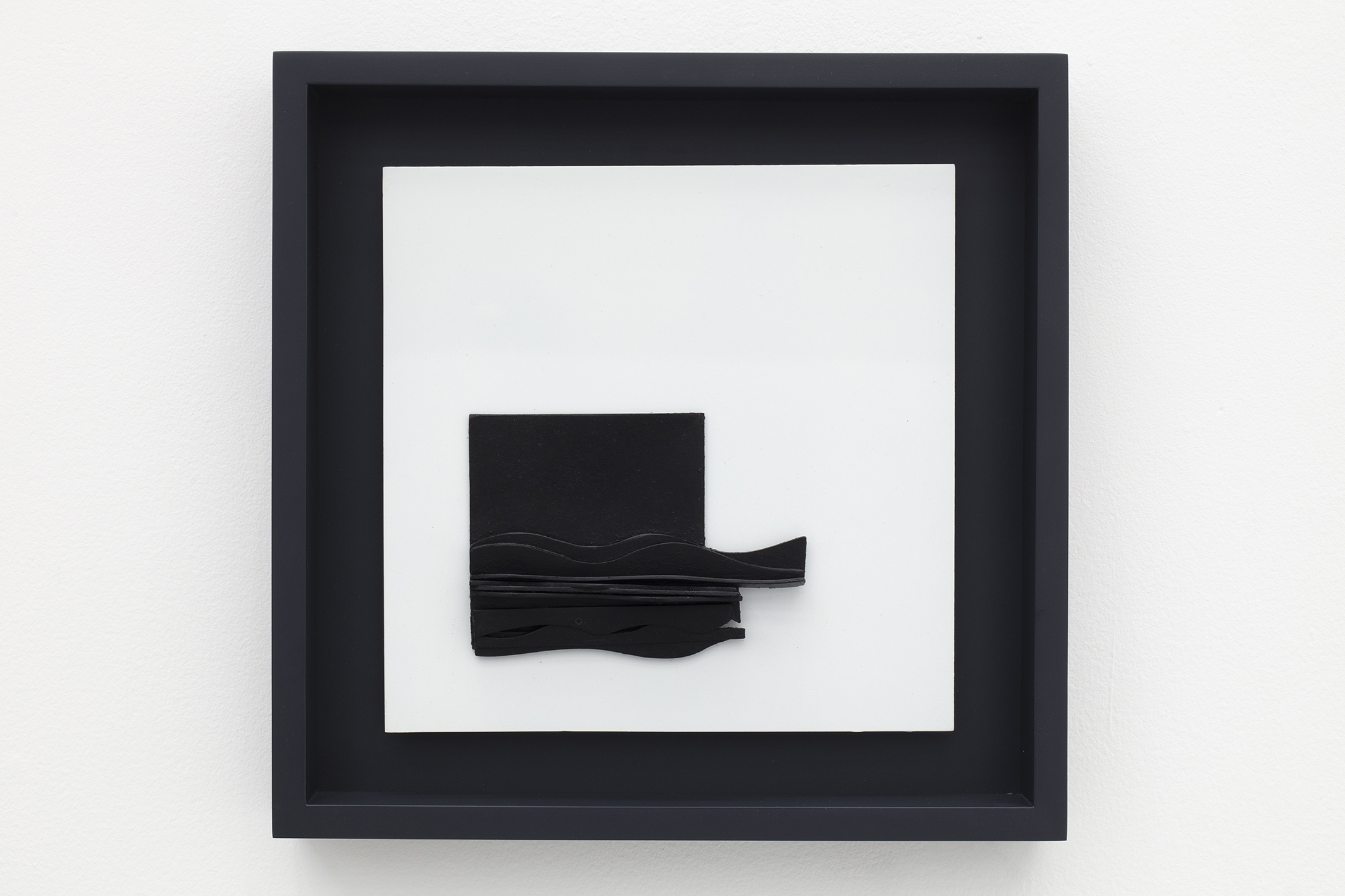
Hierro laminado y pintado, enmarcado en madera laqueada
34.5 x 34.5 x 5.5 cm
What’s a Rich Text element?
What’s a Rich Text element?The rich text element allows you to create and format headings, paragraphs, blockquotes, images, and video all in one place instead of having to add and format them individually. Just double-click and easily create content.
The rich text element allows you to create and format headings, paragraphs, blockquotes, images, and video all in one place instead of having to add and format them individually. Just double-click and easily create content.Static and dynamic content editing
Static and dynamic content editingA rich text element can be used with static or dynamic content. For static content, just drop it into any page and begin editing. For dynamic content, add a rich text field to any collection and then connect a rich text element to that field in the settings panel. Voila!
A rich text element can be used with static or dynamic content. For static content, just drop it into any page and begin editing. For dynamic content, add a rich text field to any collection and then connect a rich text element to that field in the settings panel. Voila!How to customize formatting for each rich text
How to customize formatting for each rich textHeadings, paragraphs, blockquotes, figures, images, and figure captions can all be styled after a class is added to the rich text element using the "When inside of" nested selector system.
Headings, paragraphs, blockquotes, figures, images, and figure captions can all be styled after a class is added to the rich text element using the "When inside of" nested selector system.Laminated and painted iron, framed in lacquered wood
13.58 x 13.58 x 2.17 in
What’s a Rich Text element?
What’s a Rich Text element?The rich text element allows you to create and format headings, paragraphs, blockquotes, images, and video all in one place instead of having to add and format them individually. Just double-click and easily create content.
The rich text element allows you to create and format headings, paragraphs, blockquotes, images, and video all in one place instead of having to add and format them individually. Just double-click and easily create content.Static and dynamic content editing
Static and dynamic content editingA rich text element can be used with static or dynamic content. For static content, just drop it into any page and begin editing. For dynamic content, add a rich text field to any collection and then connect a rich text element to that field in the settings panel. Voila!
A rich text element can be used with static or dynamic content. For static content, just drop it into any page and begin editing. For dynamic content, add a rich text field to any collection and then connect a rich text element to that field in the settings panel. Voila!How to customize formatting for each rich text
How to customize formatting for each rich textHeadings, paragraphs, blockquotes, figures, images, and figure captions can all be styled after a class is added to the rich text element using the "When inside of" nested selector system.
Headings, paragraphs, blockquotes, figures, images, and figure captions can all be styled after a class is added to the rich text element using the "When inside of" nested selector system.
Hierro laminado y pintado
13.5 x 48 x 4.5 cm
What’s a Rich Text element?
What’s a Rich Text element?The rich text element allows you to create and format headings, paragraphs, blockquotes, images, and video all in one place instead of having to add and format them individually. Just double-click and easily create content.
The rich text element allows you to create and format headings, paragraphs, blockquotes, images, and video all in one place instead of having to add and format them individually. Just double-click and easily create content.Static and dynamic content editing
Static and dynamic content editingA rich text element can be used with static or dynamic content. For static content, just drop it into any page and begin editing. For dynamic content, add a rich text field to any collection and then connect a rich text element to that field in the settings panel. Voila!
A rich text element can be used with static or dynamic content. For static content, just drop it into any page and begin editing. For dynamic content, add a rich text field to any collection and then connect a rich text element to that field in the settings panel. Voila!How to customize formatting for each rich text
How to customize formatting for each rich textHeadings, paragraphs, blockquotes, figures, images, and figure captions can all be styled after a class is added to the rich text element using the "When inside of" nested selector system.
Headings, paragraphs, blockquotes, figures, images, and figure captions can all be styled after a class is added to the rich text element using the "When inside of" nested selector system.Laminated and painted iron
5.31 x 18.9 x 1.77 in
What’s a Rich Text element?
What’s a Rich Text element?The rich text element allows you to create and format headings, paragraphs, blockquotes, images, and video all in one place instead of having to add and format them individually. Just double-click and easily create content.
The rich text element allows you to create and format headings, paragraphs, blockquotes, images, and video all in one place instead of having to add and format them individually. Just double-click and easily create content.Static and dynamic content editing
Static and dynamic content editingA rich text element can be used with static or dynamic content. For static content, just drop it into any page and begin editing. For dynamic content, add a rich text field to any collection and then connect a rich text element to that field in the settings panel. Voila!
A rich text element can be used with static or dynamic content. For static content, just drop it into any page and begin editing. For dynamic content, add a rich text field to any collection and then connect a rich text element to that field in the settings panel. Voila!How to customize formatting for each rich text
How to customize formatting for each rich textHeadings, paragraphs, blockquotes, figures, images, and figure captions can all be styled after a class is added to the rich text element using the "When inside of" nested selector system.
Headings, paragraphs, blockquotes, figures, images, and figure captions can all be styled after a class is added to the rich text element using the "When inside of" nested selector system.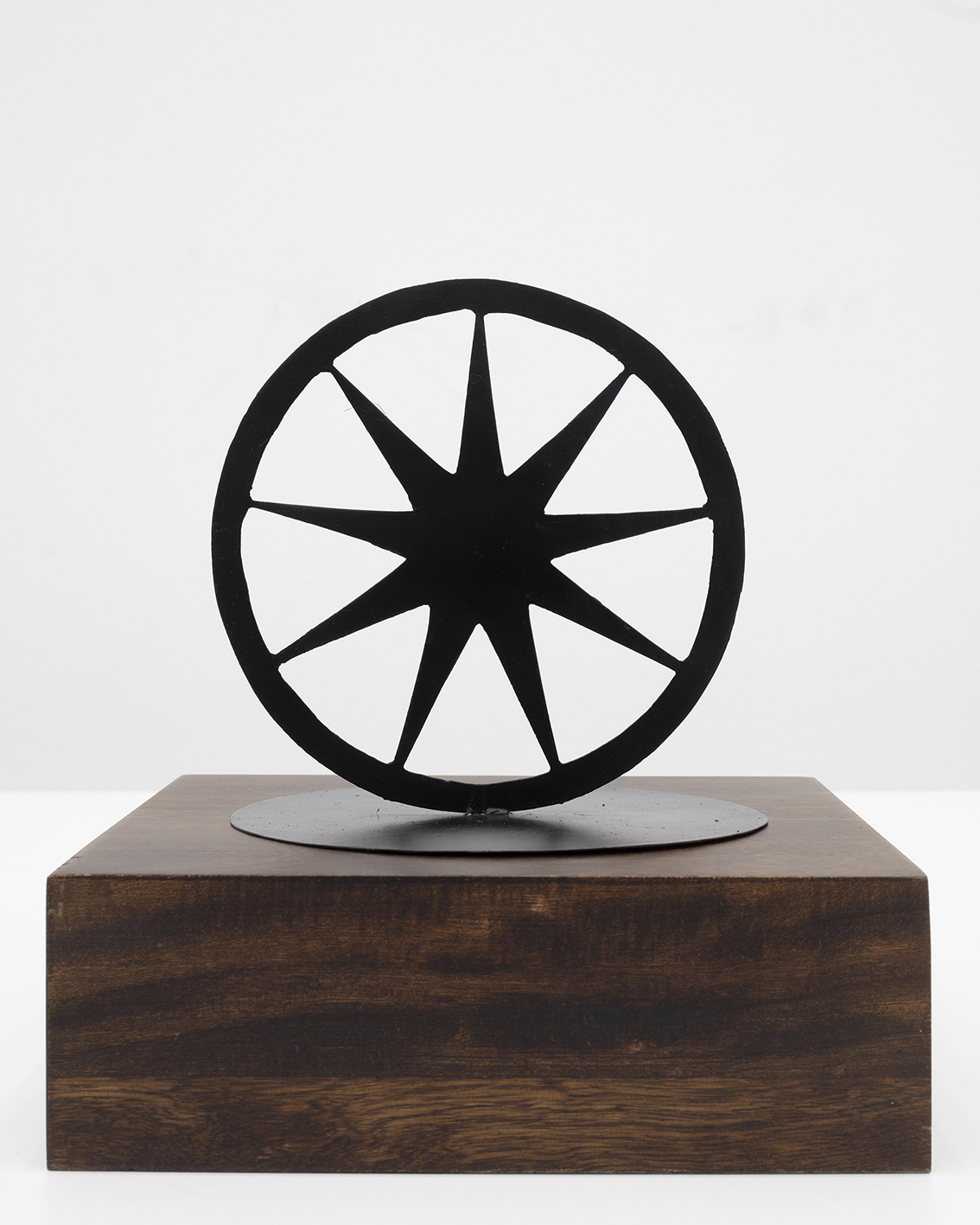
Hierro laminado y pintado
22 x 21 x 21 cm
What’s a Rich Text element?
What’s a Rich Text element?The rich text element allows you to create and format headings, paragraphs, blockquotes, images, and video all in one place instead of having to add and format them individually. Just double-click and easily create content.
The rich text element allows you to create and format headings, paragraphs, blockquotes, images, and video all in one place instead of having to add and format them individually. Just double-click and easily create content.Static and dynamic content editing
Static and dynamic content editingA rich text element can be used with static or dynamic content. For static content, just drop it into any page and begin editing. For dynamic content, add a rich text field to any collection and then connect a rich text element to that field in the settings panel. Voila!
A rich text element can be used with static or dynamic content. For static content, just drop it into any page and begin editing. For dynamic content, add a rich text field to any collection and then connect a rich text element to that field in the settings panel. Voila!How to customize formatting for each rich text
How to customize formatting for each rich textHeadings, paragraphs, blockquotes, figures, images, and figure captions can all be styled after a class is added to the rich text element using the "When inside of" nested selector system.
Headings, paragraphs, blockquotes, figures, images, and figure captions can all be styled after a class is added to the rich text element using the "When inside of" nested selector system.Laminated and painted iron
8.66 x 8.27 x 8.27 in
What’s a Rich Text element?
What’s a Rich Text element?The rich text element allows you to create and format headings, paragraphs, blockquotes, images, and video all in one place instead of having to add and format them individually. Just double-click and easily create content.
The rich text element allows you to create and format headings, paragraphs, blockquotes, images, and video all in one place instead of having to add and format them individually. Just double-click and easily create content.Static and dynamic content editing
Static and dynamic content editingA rich text element can be used with static or dynamic content. For static content, just drop it into any page and begin editing. For dynamic content, add a rich text field to any collection and then connect a rich text element to that field in the settings panel. Voila!
A rich text element can be used with static or dynamic content. For static content, just drop it into any page and begin editing. For dynamic content, add a rich text field to any collection and then connect a rich text element to that field in the settings panel. Voila!How to customize formatting for each rich text
How to customize formatting for each rich textHeadings, paragraphs, blockquotes, figures, images, and figure captions can all be styled after a class is added to the rich text element using the "When inside of" nested selector system.
Headings, paragraphs, blockquotes, figures, images, and figure captions can all be styled after a class is added to the rich text element using the "When inside of" nested selector system.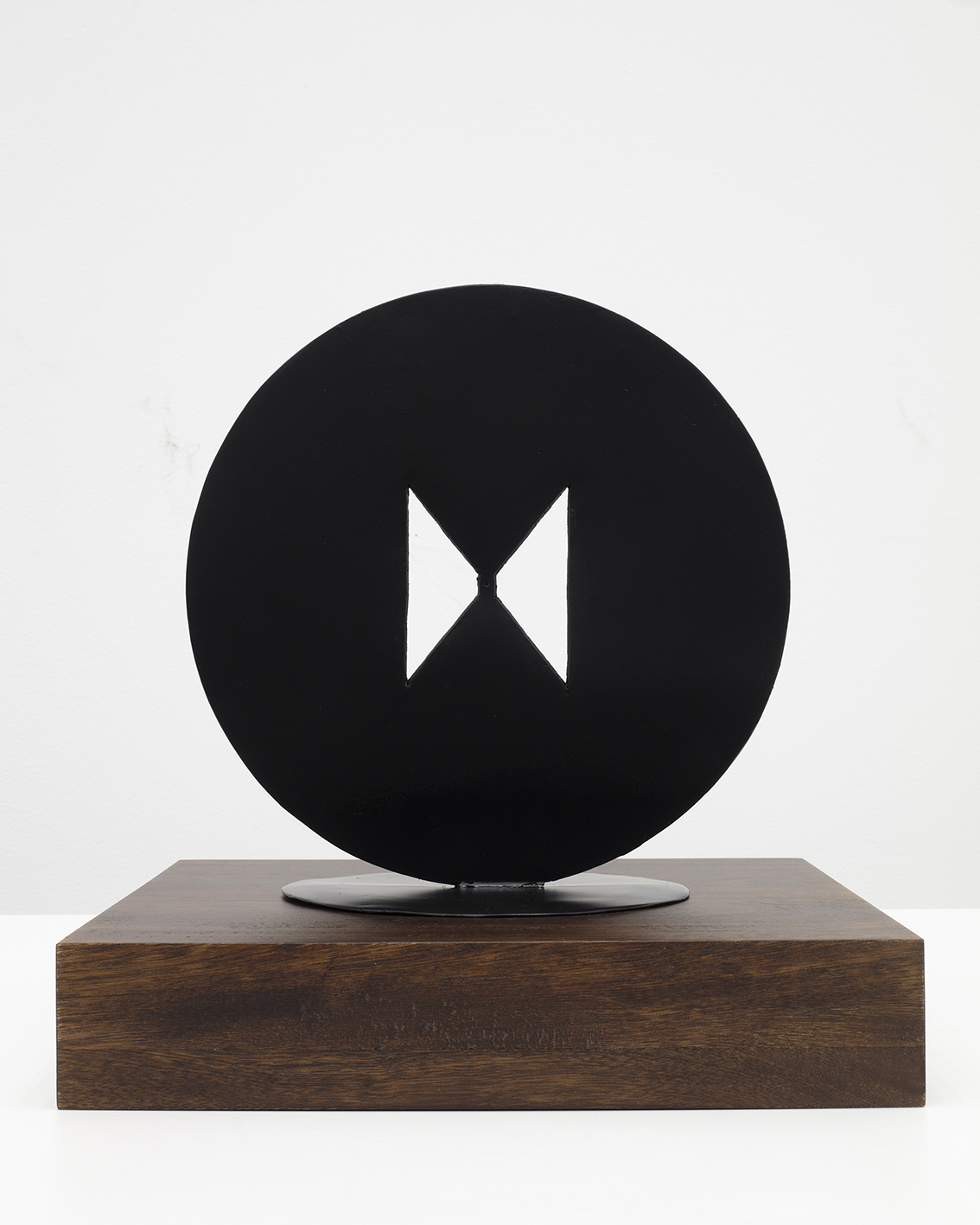
Hierro laminado y pintado
37 x 36 x 26 cm
What’s a Rich Text element?
What’s a Rich Text element?The rich text element allows you to create and format headings, paragraphs, blockquotes, images, and video all in one place instead of having to add and format them individually. Just double-click and easily create content.
The rich text element allows you to create and format headings, paragraphs, blockquotes, images, and video all in one place instead of having to add and format them individually. Just double-click and easily create content.Static and dynamic content editing
Static and dynamic content editingA rich text element can be used with static or dynamic content. For static content, just drop it into any page and begin editing. For dynamic content, add a rich text field to any collection and then connect a rich text element to that field in the settings panel. Voila!
A rich text element can be used with static or dynamic content. For static content, just drop it into any page and begin editing. For dynamic content, add a rich text field to any collection and then connect a rich text element to that field in the settings panel. Voila!How to customize formatting for each rich text
How to customize formatting for each rich textHeadings, paragraphs, blockquotes, figures, images, and figure captions can all be styled after a class is added to the rich text element using the "When inside of" nested selector system.
Headings, paragraphs, blockquotes, figures, images, and figure captions can all be styled after a class is added to the rich text element using the "When inside of" nested selector system.Laminated and painted iron
14.57 x 14.17 x 10.24 in
What’s a Rich Text element?
What’s a Rich Text element?The rich text element allows you to create and format headings, paragraphs, blockquotes, images, and video all in one place instead of having to add and format them individually. Just double-click and easily create content.
The rich text element allows you to create and format headings, paragraphs, blockquotes, images, and video all in one place instead of having to add and format them individually. Just double-click and easily create content.Static and dynamic content editing
Static and dynamic content editingA rich text element can be used with static or dynamic content. For static content, just drop it into any page and begin editing. For dynamic content, add a rich text field to any collection and then connect a rich text element to that field in the settings panel. Voila!
A rich text element can be used with static or dynamic content. For static content, just drop it into any page and begin editing. For dynamic content, add a rich text field to any collection and then connect a rich text element to that field in the settings panel. Voila!How to customize formatting for each rich text
How to customize formatting for each rich textHeadings, paragraphs, blockquotes, figures, images, and figure captions can all be styled after a class is added to the rich text element using the "When inside of" nested selector system.
Headings, paragraphs, blockquotes, figures, images, and figure captions can all be styled after a class is added to the rich text element using the "When inside of" nested selector system.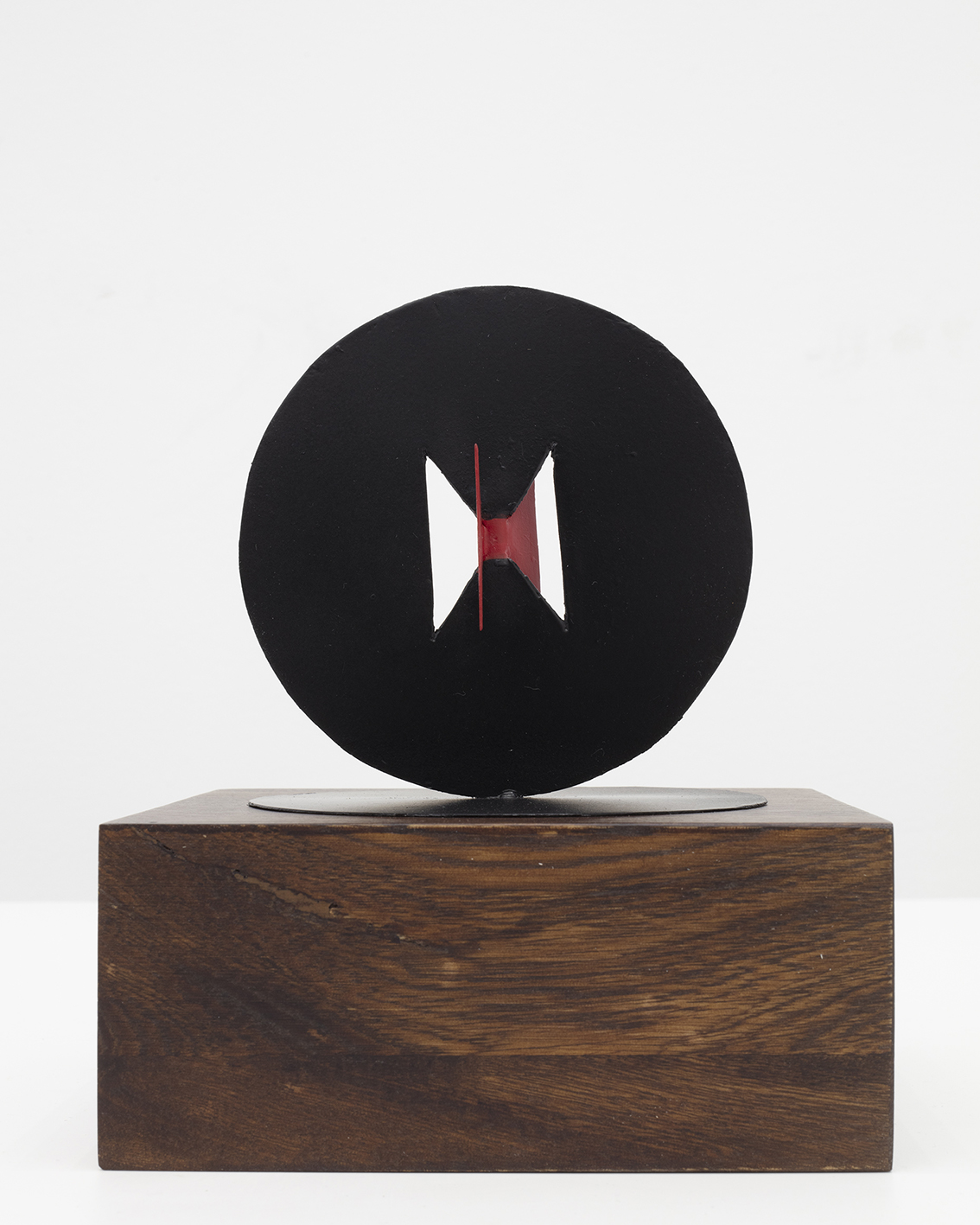
Hierro laminado y pintado
19 x 18 x 18 cm
What’s a Rich Text element?
What’s a Rich Text element?The rich text element allows you to create and format headings, paragraphs, blockquotes, images, and video all in one place instead of having to add and format them individually. Just double-click and easily create content.
The rich text element allows you to create and format headings, paragraphs, blockquotes, images, and video all in one place instead of having to add and format them individually. Just double-click and easily create content.Static and dynamic content editing
Static and dynamic content editingA rich text element can be used with static or dynamic content. For static content, just drop it into any page and begin editing. For dynamic content, add a rich text field to any collection and then connect a rich text element to that field in the settings panel. Voila!
A rich text element can be used with static or dynamic content. For static content, just drop it into any page and begin editing. For dynamic content, add a rich text field to any collection and then connect a rich text element to that field in the settings panel. Voila!How to customize formatting for each rich text
How to customize formatting for each rich textHeadings, paragraphs, blockquotes, figures, images, and figure captions can all be styled after a class is added to the rich text element using the "When inside of" nested selector system.
Headings, paragraphs, blockquotes, figures, images, and figure captions can all be styled after a class is added to the rich text element using the "When inside of" nested selector system.Laminated and painted iron
7.48 x 7.09 x 7.09 in
What’s a Rich Text element?
What’s a Rich Text element?The rich text element allows you to create and format headings, paragraphs, blockquotes, images, and video all in one place instead of having to add and format them individually. Just double-click and easily create content.
The rich text element allows you to create and format headings, paragraphs, blockquotes, images, and video all in one place instead of having to add and format them individually. Just double-click and easily create content.Static and dynamic content editing
Static and dynamic content editingA rich text element can be used with static or dynamic content. For static content, just drop it into any page and begin editing. For dynamic content, add a rich text field to any collection and then connect a rich text element to that field in the settings panel. Voila!
A rich text element can be used with static or dynamic content. For static content, just drop it into any page and begin editing. For dynamic content, add a rich text field to any collection and then connect a rich text element to that field in the settings panel. Voila!How to customize formatting for each rich text
How to customize formatting for each rich textHeadings, paragraphs, blockquotes, figures, images, and figure captions can all be styled after a class is added to the rich text element using the "When inside of" nested selector system.
Headings, paragraphs, blockquotes, figures, images, and figure captions can all be styled after a class is added to the rich text element using the "When inside of" nested selector system.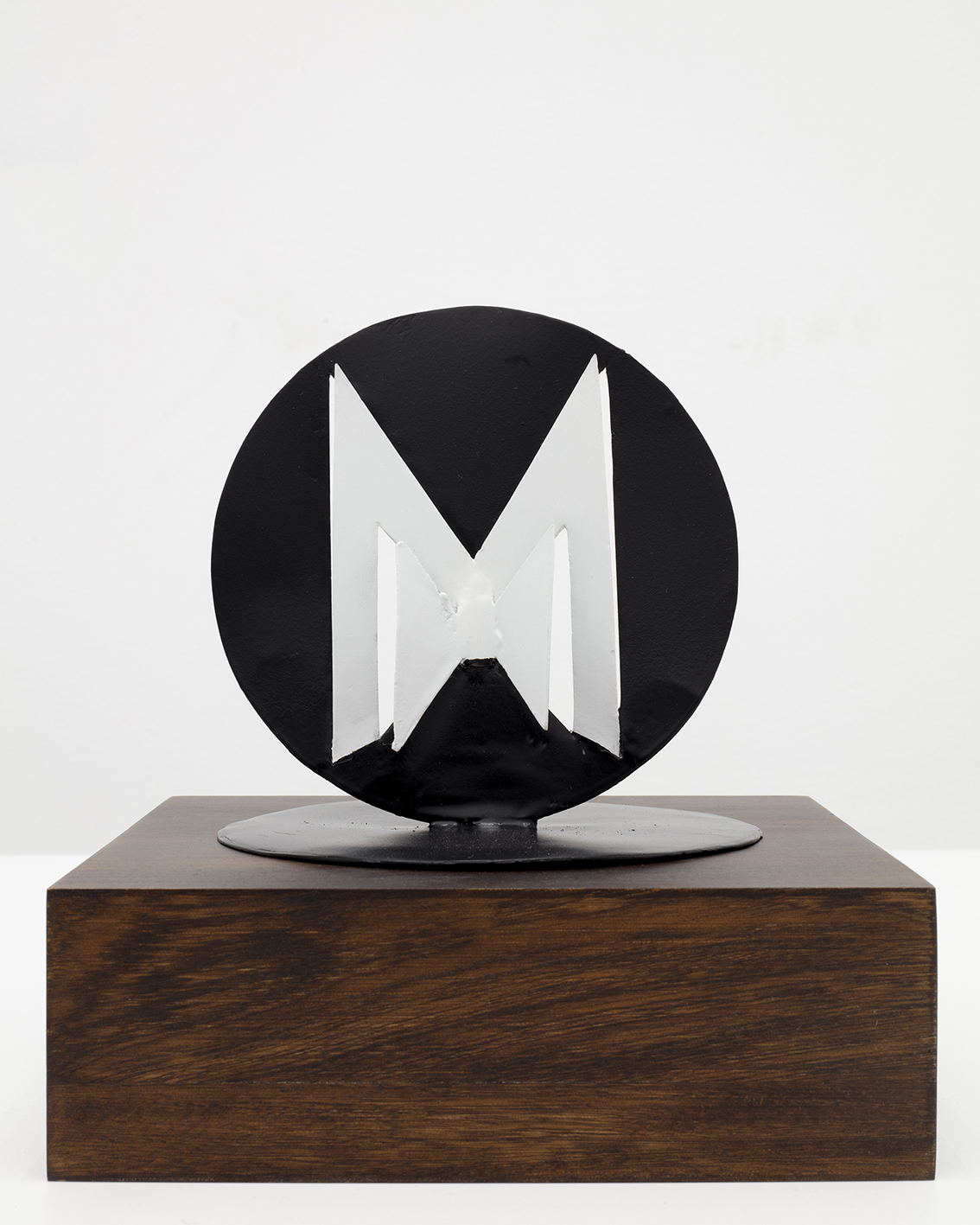
Hierro laminado y pintado
22 x 21 x 21 cm
What’s a Rich Text element?
What’s a Rich Text element?The rich text element allows you to create and format headings, paragraphs, blockquotes, images, and video all in one place instead of having to add and format them individually. Just double-click and easily create content.
The rich text element allows you to create and format headings, paragraphs, blockquotes, images, and video all in one place instead of having to add and format them individually. Just double-click and easily create content.Static and dynamic content editing
Static and dynamic content editingA rich text element can be used with static or dynamic content. For static content, just drop it into any page and begin editing. For dynamic content, add a rich text field to any collection and then connect a rich text element to that field in the settings panel. Voila!
A rich text element can be used with static or dynamic content. For static content, just drop it into any page and begin editing. For dynamic content, add a rich text field to any collection and then connect a rich text element to that field in the settings panel. Voila!How to customize formatting for each rich text
How to customize formatting for each rich textHeadings, paragraphs, blockquotes, figures, images, and figure captions can all be styled after a class is added to the rich text element using the "When inside of" nested selector system.
Headings, paragraphs, blockquotes, figures, images, and figure captions can all be styled after a class is added to the rich text element using the "When inside of" nested selector system.Laminated and painted iron
8.66 x 8.27 x 8.27 in
What’s a Rich Text element?
What’s a Rich Text element?The rich text element allows you to create and format headings, paragraphs, blockquotes, images, and video all in one place instead of having to add and format them individually. Just double-click and easily create content.
The rich text element allows you to create and format headings, paragraphs, blockquotes, images, and video all in one place instead of having to add and format them individually. Just double-click and easily create content.Static and dynamic content editing
Static and dynamic content editingA rich text element can be used with static or dynamic content. For static content, just drop it into any page and begin editing. For dynamic content, add a rich text field to any collection and then connect a rich text element to that field in the settings panel. Voila!
A rich text element can be used with static or dynamic content. For static content, just drop it into any page and begin editing. For dynamic content, add a rich text field to any collection and then connect a rich text element to that field in the settings panel. Voila!How to customize formatting for each rich text
How to customize formatting for each rich textHeadings, paragraphs, blockquotes, figures, images, and figure captions can all be styled after a class is added to the rich text element using the "When inside of" nested selector system.
Headings, paragraphs, blockquotes, figures, images, and figure captions can all be styled after a class is added to the rich text element using the "When inside of" nested selector system.
Plata esterlina
24.2 x 15 x 16 cm
What’s a Rich Text element?
What’s a Rich Text element?The rich text element allows you to create and format headings, paragraphs, blockquotes, images, and video all in one place instead of having to add and format them individually. Just double-click and easily create content.
The rich text element allows you to create and format headings, paragraphs, blockquotes, images, and video all in one place instead of having to add and format them individually. Just double-click and easily create content.Static and dynamic content editing
Static and dynamic content editingA rich text element can be used with static or dynamic content. For static content, just drop it into any page and begin editing. For dynamic content, add a rich text field to any collection and then connect a rich text element to that field in the settings panel. Voila!
A rich text element can be used with static or dynamic content. For static content, just drop it into any page and begin editing. For dynamic content, add a rich text field to any collection and then connect a rich text element to that field in the settings panel. Voila!How to customize formatting for each rich text
How to customize formatting for each rich textHeadings, paragraphs, blockquotes, figures, images, and figure captions can all be styled after a class is added to the rich text element using the "When inside of" nested selector system.
Headings, paragraphs, blockquotes, figures, images, and figure captions can all be styled after a class is added to the rich text element using the "When inside of" nested selector system.Sterling silver
9.53 x 5.91 x 6.3 in
What’s a Rich Text element?
What’s a Rich Text element?The rich text element allows you to create and format headings, paragraphs, blockquotes, images, and video all in one place instead of having to add and format them individually. Just double-click and easily create content.
The rich text element allows you to create and format headings, paragraphs, blockquotes, images, and video all in one place instead of having to add and format them individually. Just double-click and easily create content.Static and dynamic content editing
Static and dynamic content editingA rich text element can be used with static or dynamic content. For static content, just drop it into any page and begin editing. For dynamic content, add a rich text field to any collection and then connect a rich text element to that field in the settings panel. Voila!
A rich text element can be used with static or dynamic content. For static content, just drop it into any page and begin editing. For dynamic content, add a rich text field to any collection and then connect a rich text element to that field in the settings panel. Voila!How to customize formatting for each rich text
How to customize formatting for each rich textHeadings, paragraphs, blockquotes, figures, images, and figure captions can all be styled after a class is added to the rich text element using the "When inside of" nested selector system.
Headings, paragraphs, blockquotes, figures, images, and figure captions can all be styled after a class is added to the rich text element using the "When inside of" nested selector system.
Plata esterlina
9 x 35 x 12 cm
What’s a Rich Text element?
What’s a Rich Text element?The rich text element allows you to create and format headings, paragraphs, blockquotes, images, and video all in one place instead of having to add and format them individually. Just double-click and easily create content.
The rich text element allows you to create and format headings, paragraphs, blockquotes, images, and video all in one place instead of having to add and format them individually. Just double-click and easily create content.Static and dynamic content editing
Static and dynamic content editingA rich text element can be used with static or dynamic content. For static content, just drop it into any page and begin editing. For dynamic content, add a rich text field to any collection and then connect a rich text element to that field in the settings panel. Voila!
A rich text element can be used with static or dynamic content. For static content, just drop it into any page and begin editing. For dynamic content, add a rich text field to any collection and then connect a rich text element to that field in the settings panel. Voila!How to customize formatting for each rich text
How to customize formatting for each rich textHeadings, paragraphs, blockquotes, figures, images, and figure captions can all be styled after a class is added to the rich text element using the "When inside of" nested selector system.
Headings, paragraphs, blockquotes, figures, images, and figure captions can all be styled after a class is added to the rich text element using the "When inside of" nested selector system.Sterling silver
3.54 x 13.78 x 4.72 in
What’s a Rich Text element?
What’s a Rich Text element?The rich text element allows you to create and format headings, paragraphs, blockquotes, images, and video all in one place instead of having to add and format them individually. Just double-click and easily create content.
The rich text element allows you to create and format headings, paragraphs, blockquotes, images, and video all in one place instead of having to add and format them individually. Just double-click and easily create content.Static and dynamic content editing
Static and dynamic content editingA rich text element can be used with static or dynamic content. For static content, just drop it into any page and begin editing. For dynamic content, add a rich text field to any collection and then connect a rich text element to that field in the settings panel. Voila!
A rich text element can be used with static or dynamic content. For static content, just drop it into any page and begin editing. For dynamic content, add a rich text field to any collection and then connect a rich text element to that field in the settings panel. Voila!How to customize formatting for each rich text
How to customize formatting for each rich textHeadings, paragraphs, blockquotes, figures, images, and figure captions can all be styled after a class is added to the rich text element using the "When inside of" nested selector system.
Headings, paragraphs, blockquotes, figures, images, and figure captions can all be styled after a class is added to the rich text element using the "When inside of" nested selector system.
Plata
27.5 x 19 x 17 cm
What’s a Rich Text element?
What’s a Rich Text element?The rich text element allows you to create and format headings, paragraphs, blockquotes, images, and video all in one place instead of having to add and format them individually. Just double-click and easily create content.
The rich text element allows you to create and format headings, paragraphs, blockquotes, images, and video all in one place instead of having to add and format them individually. Just double-click and easily create content.Static and dynamic content editing
Static and dynamic content editingA rich text element can be used with static or dynamic content. For static content, just drop it into any page and begin editing. For dynamic content, add a rich text field to any collection and then connect a rich text element to that field in the settings panel. Voila!
A rich text element can be used with static or dynamic content. For static content, just drop it into any page and begin editing. For dynamic content, add a rich text field to any collection and then connect a rich text element to that field in the settings panel. Voila!How to customize formatting for each rich text
How to customize formatting for each rich textHeadings, paragraphs, blockquotes, figures, images, and figure captions can all be styled after a class is added to the rich text element using the "When inside of" nested selector system.
Headings, paragraphs, blockquotes, figures, images, and figure captions can all be styled after a class is added to the rich text element using the "When inside of" nested selector system.Silver
10.83 x 7.48 x 6.69 in
What’s a Rich Text element?
What’s a Rich Text element?The rich text element allows you to create and format headings, paragraphs, blockquotes, images, and video all in one place instead of having to add and format them individually. Just double-click and easily create content.
The rich text element allows you to create and format headings, paragraphs, blockquotes, images, and video all in one place instead of having to add and format them individually. Just double-click and easily create content.Static and dynamic content editing
Static and dynamic content editingA rich text element can be used with static or dynamic content. For static content, just drop it into any page and begin editing. For dynamic content, add a rich text field to any collection and then connect a rich text element to that field in the settings panel. Voila!
A rich text element can be used with static or dynamic content. For static content, just drop it into any page and begin editing. For dynamic content, add a rich text field to any collection and then connect a rich text element to that field in the settings panel. Voila!How to customize formatting for each rich text
How to customize formatting for each rich textHeadings, paragraphs, blockquotes, figures, images, and figure captions can all be styled after a class is added to the rich text element using the "When inside of" nested selector system.
Headings, paragraphs, blockquotes, figures, images, and figure captions can all be styled after a class is added to the rich text element using the "When inside of" nested selector system.
Plata esterlina
15.5 x 57 x 20.5 cm
What’s a Rich Text element?
What’s a Rich Text element?The rich text element allows you to create and format headings, paragraphs, blockquotes, images, and video all in one place instead of having to add and format them individually. Just double-click and easily create content.
The rich text element allows you to create and format headings, paragraphs, blockquotes, images, and video all in one place instead of having to add and format them individually. Just double-click and easily create content.Static and dynamic content editing
Static and dynamic content editingA rich text element can be used with static or dynamic content. For static content, just drop it into any page and begin editing. For dynamic content, add a rich text field to any collection and then connect a rich text element to that field in the settings panel. Voila!
A rich text element can be used with static or dynamic content. For static content, just drop it into any page and begin editing. For dynamic content, add a rich text field to any collection and then connect a rich text element to that field in the settings panel. Voila!How to customize formatting for each rich text
How to customize formatting for each rich textHeadings, paragraphs, blockquotes, figures, images, and figure captions can all be styled after a class is added to the rich text element using the "When inside of" nested selector system.
Headings, paragraphs, blockquotes, figures, images, and figure captions can all be styled after a class is added to the rich text element using the "When inside of" nested selector system.Sterling silver
6.1 x 22.44 x 8.07 in
What’s a Rich Text element?
What’s a Rich Text element?The rich text element allows you to create and format headings, paragraphs, blockquotes, images, and video all in one place instead of having to add and format them individually. Just double-click and easily create content.
The rich text element allows you to create and format headings, paragraphs, blockquotes, images, and video all in one place instead of having to add and format them individually. Just double-click and easily create content.Static and dynamic content editing
Static and dynamic content editingA rich text element can be used with static or dynamic content. For static content, just drop it into any page and begin editing. For dynamic content, add a rich text field to any collection and then connect a rich text element to that field in the settings panel. Voila!
A rich text element can be used with static or dynamic content. For static content, just drop it into any page and begin editing. For dynamic content, add a rich text field to any collection and then connect a rich text element to that field in the settings panel. Voila!How to customize formatting for each rich text
How to customize formatting for each rich textHeadings, paragraphs, blockquotes, figures, images, and figure captions can all be styled after a class is added to the rich text element using the "When inside of" nested selector system.
Headings, paragraphs, blockquotes, figures, images, and figure captions can all be styled after a class is added to the rich text element using the "When inside of" nested selector system.
Plata esterlina
20.7 x 80 x 25 cm
What’s a Rich Text element?
What’s a Rich Text element?The rich text element allows you to create and format headings, paragraphs, blockquotes, images, and video all in one place instead of having to add and format them individually. Just double-click and easily create content.
The rich text element allows you to create and format headings, paragraphs, blockquotes, images, and video all in one place instead of having to add and format them individually. Just double-click and easily create content.Static and dynamic content editing
Static and dynamic content editingA rich text element can be used with static or dynamic content. For static content, just drop it into any page and begin editing. For dynamic content, add a rich text field to any collection and then connect a rich text element to that field in the settings panel. Voila!
A rich text element can be used with static or dynamic content. For static content, just drop it into any page and begin editing. For dynamic content, add a rich text field to any collection and then connect a rich text element to that field in the settings panel. Voila!How to customize formatting for each rich text
How to customize formatting for each rich textHeadings, paragraphs, blockquotes, figures, images, and figure captions can all be styled after a class is added to the rich text element using the "When inside of" nested selector system.
Headings, paragraphs, blockquotes, figures, images, and figure captions can all be styled after a class is added to the rich text element using the "When inside of" nested selector system.Sterling silver
8.15 x 31.5 x 9.84 in
What’s a Rich Text element?
What’s a Rich Text element?The rich text element allows you to create and format headings, paragraphs, blockquotes, images, and video all in one place instead of having to add and format them individually. Just double-click and easily create content.
The rich text element allows you to create and format headings, paragraphs, blockquotes, images, and video all in one place instead of having to add and format them individually. Just double-click and easily create content.Static and dynamic content editing
Static and dynamic content editingA rich text element can be used with static or dynamic content. For static content, just drop it into any page and begin editing. For dynamic content, add a rich text field to any collection and then connect a rich text element to that field in the settings panel. Voila!
A rich text element can be used with static or dynamic content. For static content, just drop it into any page and begin editing. For dynamic content, add a rich text field to any collection and then connect a rich text element to that field in the settings panel. Voila!How to customize formatting for each rich text
How to customize formatting for each rich textHeadings, paragraphs, blockquotes, figures, images, and figure captions can all be styled after a class is added to the rich text element using the "When inside of" nested selector system.
Headings, paragraphs, blockquotes, figures, images, and figure captions can all be styled after a class is added to the rich text element using the "When inside of" nested selector system.Video Full HD
Loop
2020
Video Full HD
Loop
2021
Video Full HD
Loop
2021
Video Full HD
Loop
2021
Video Full HD
Loop
2021
Video Full HD
Loop
2021


